Vashchenko E. A. Natural disasters GLOSSARY
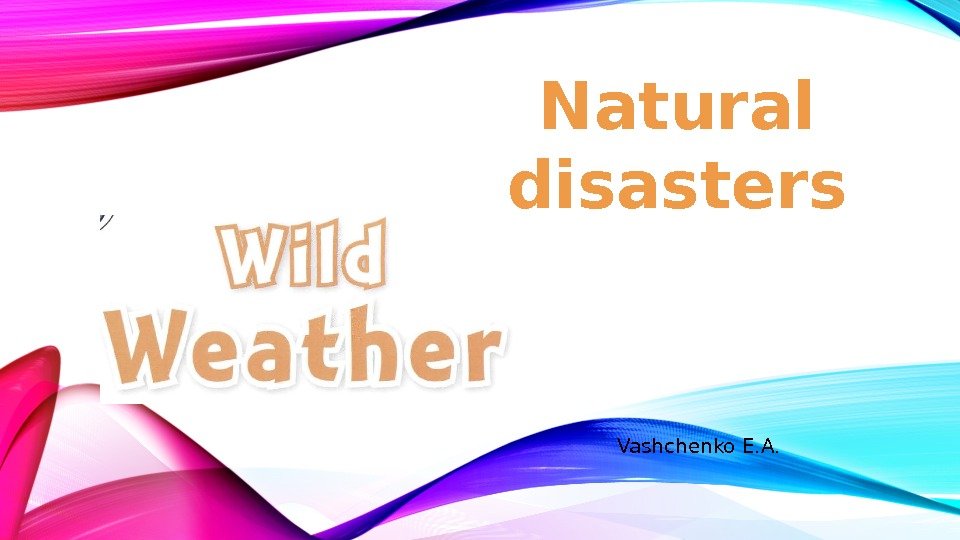

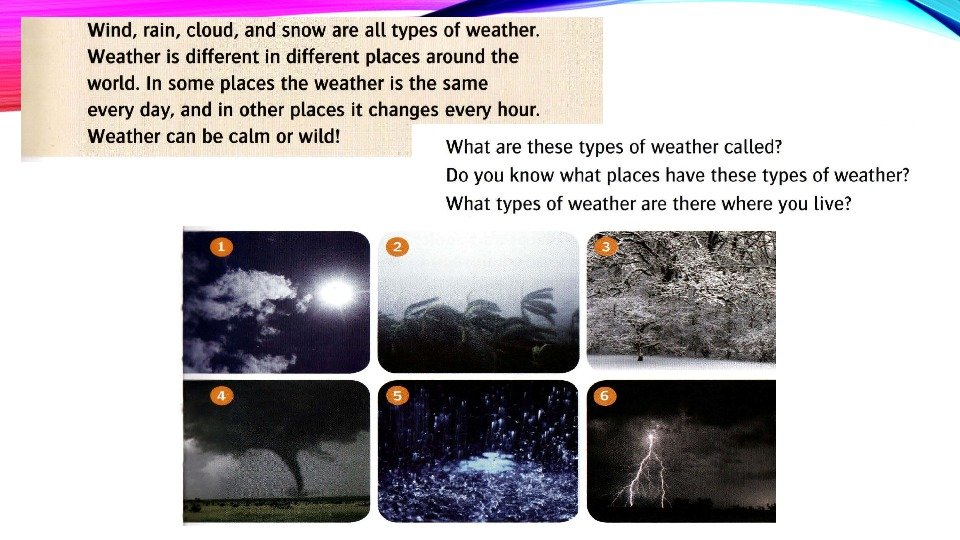


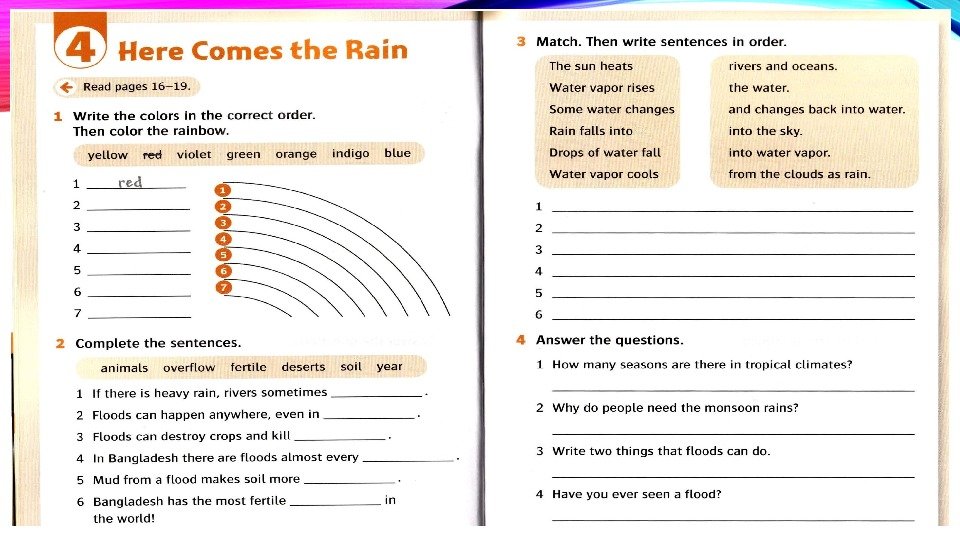
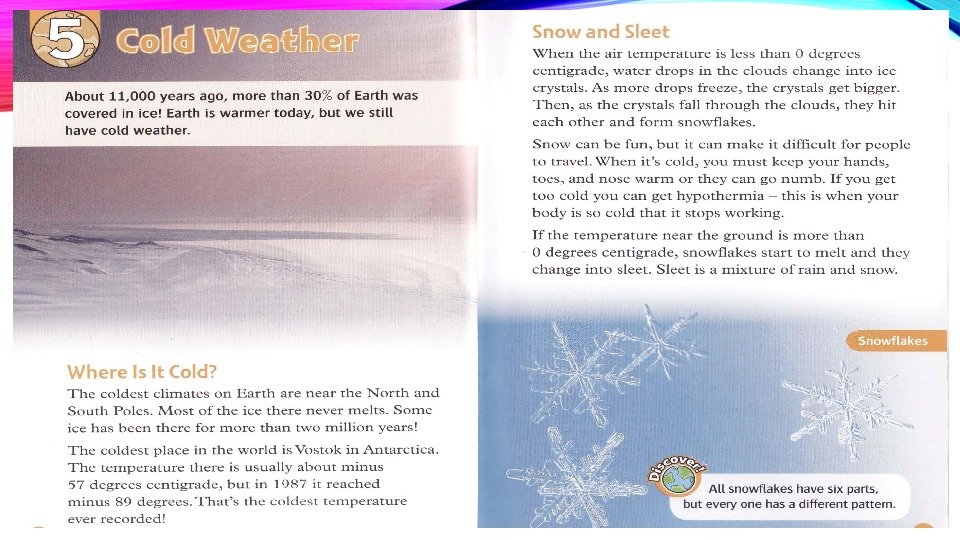
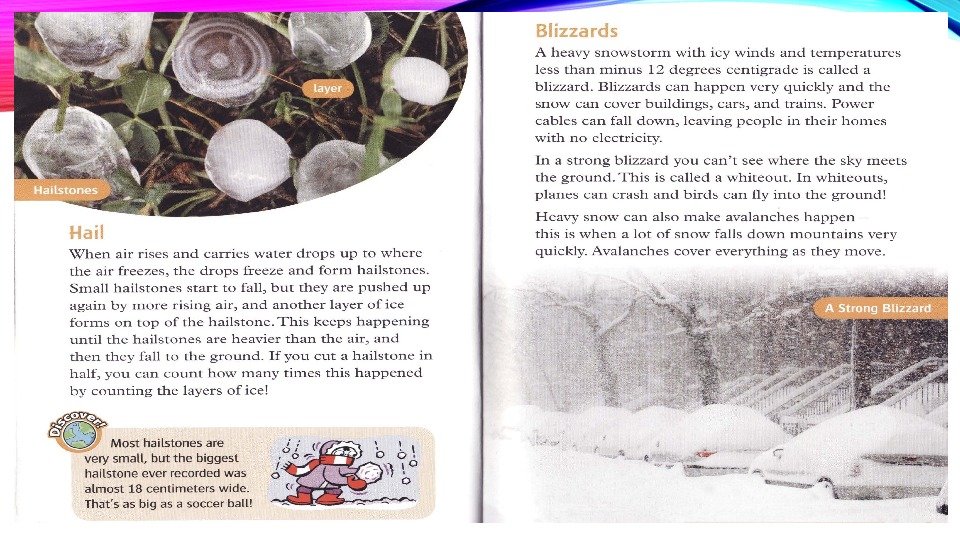
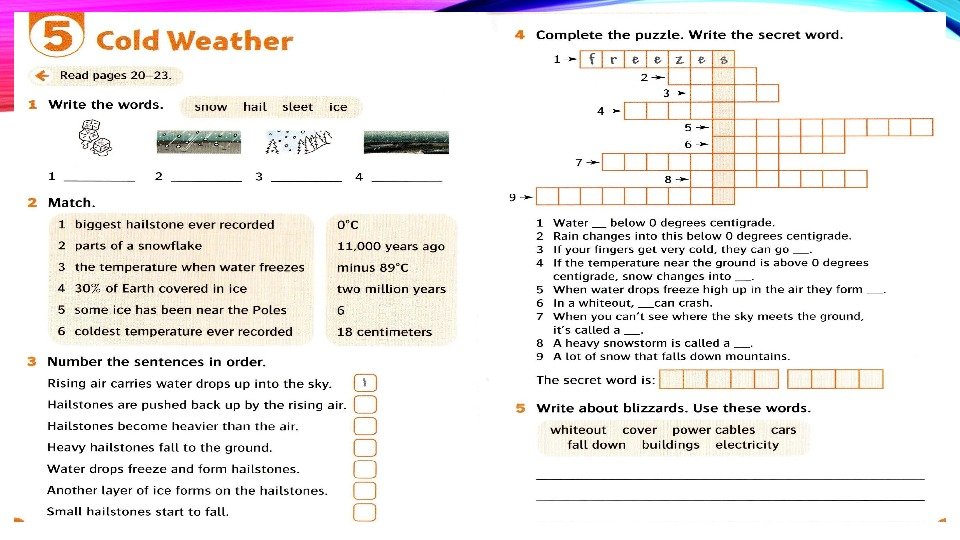

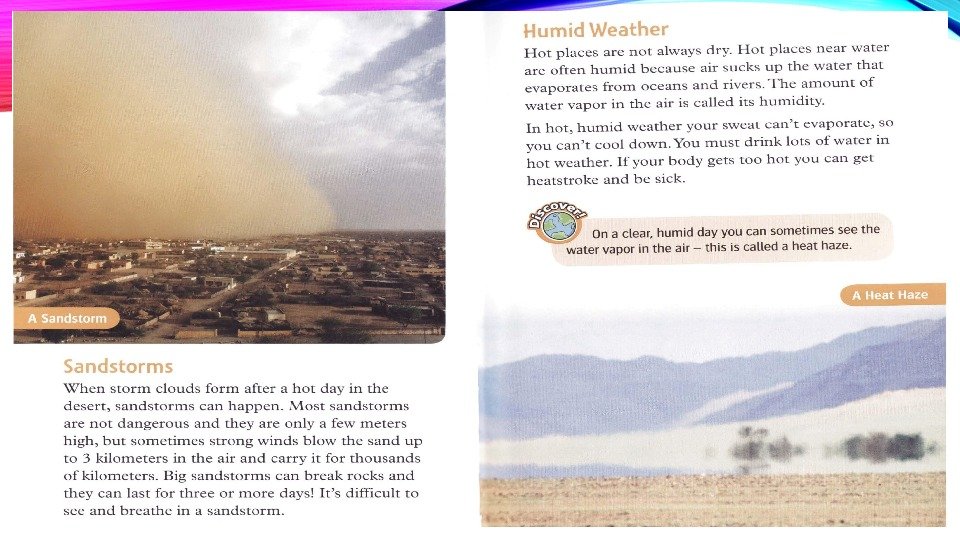
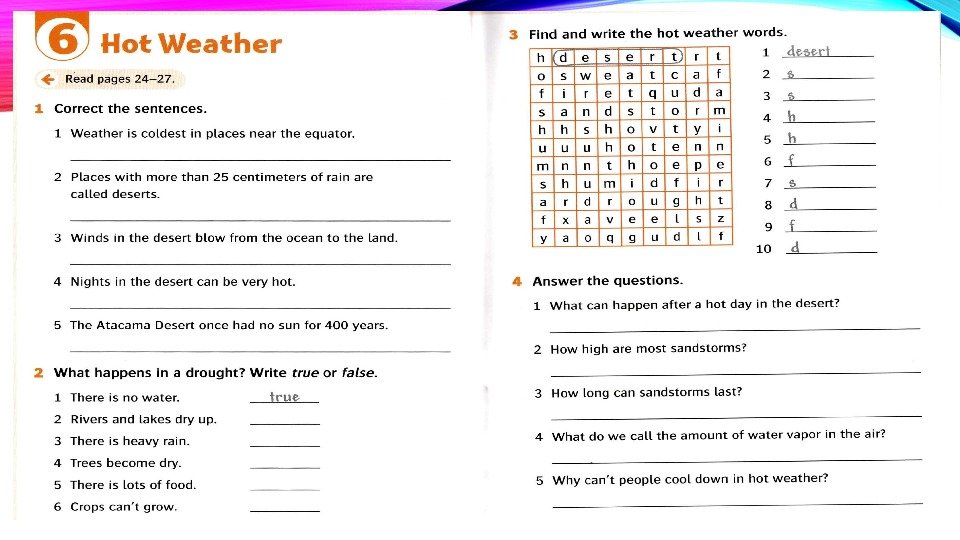
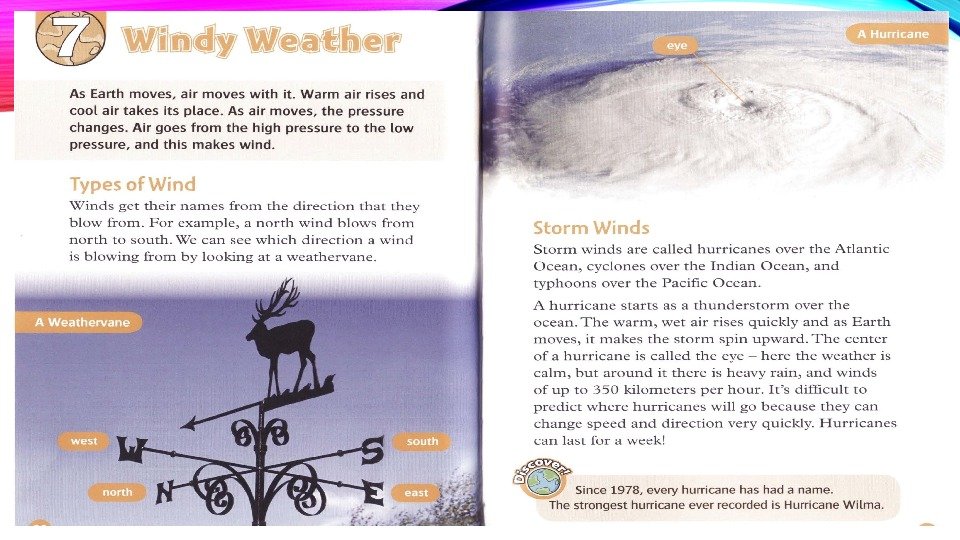
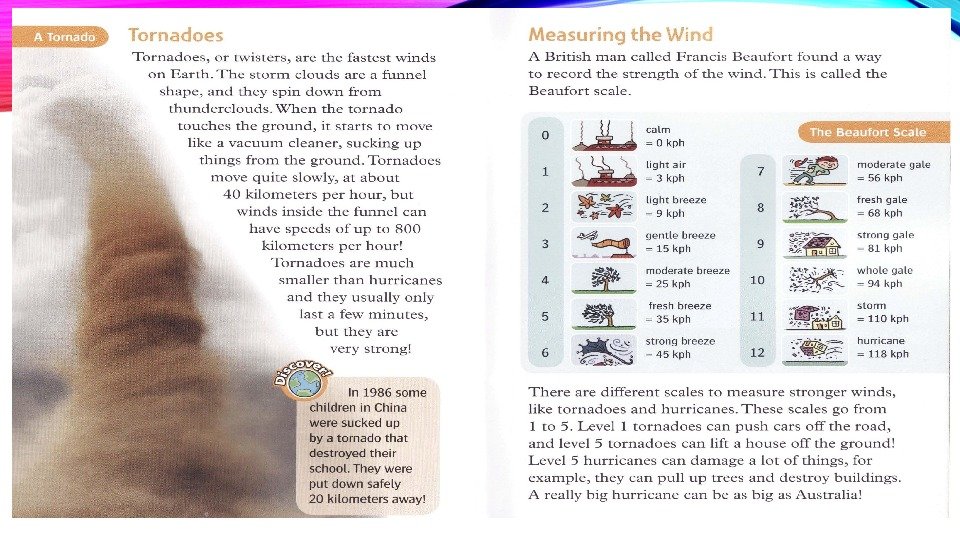

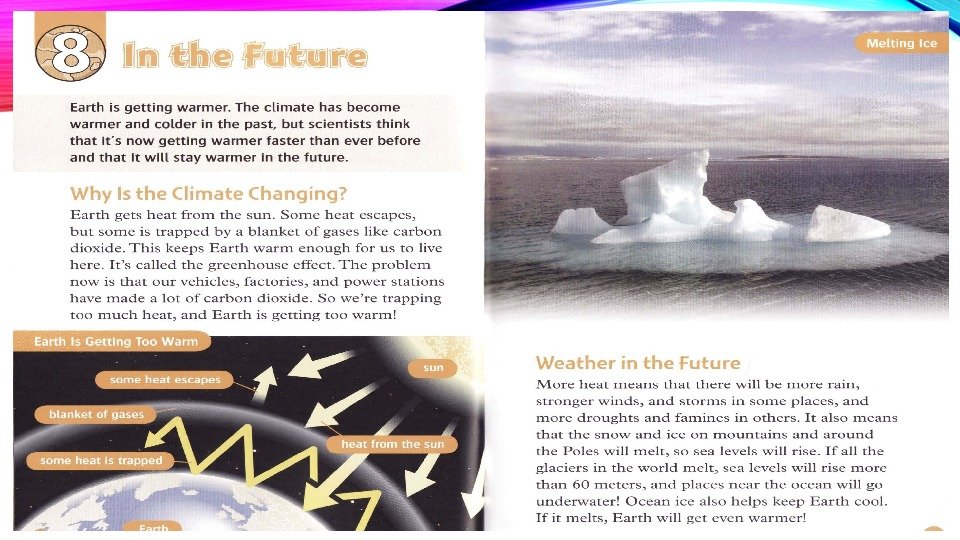
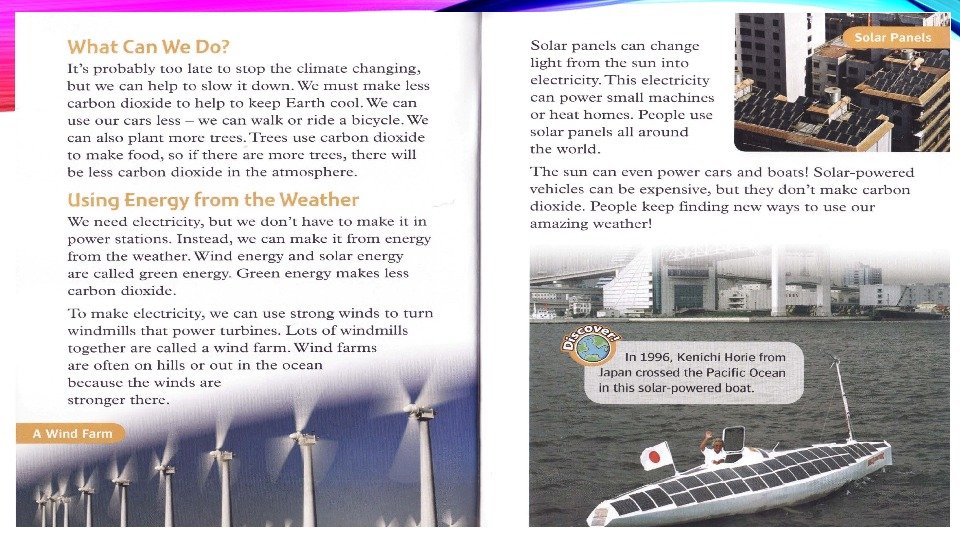
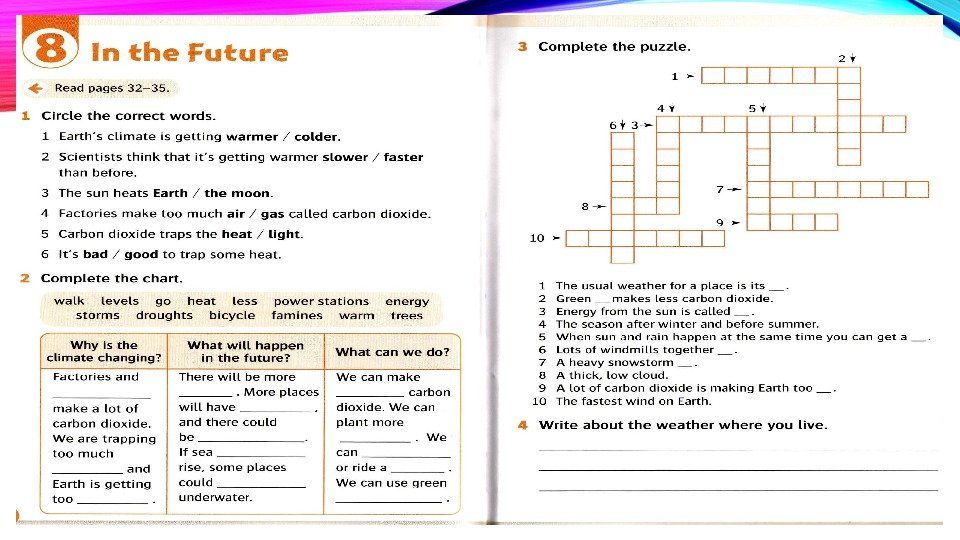
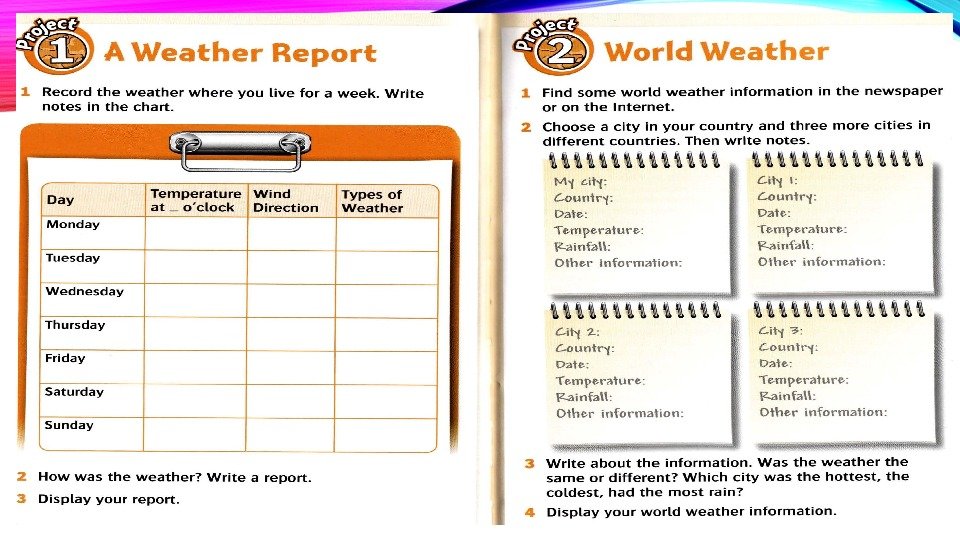
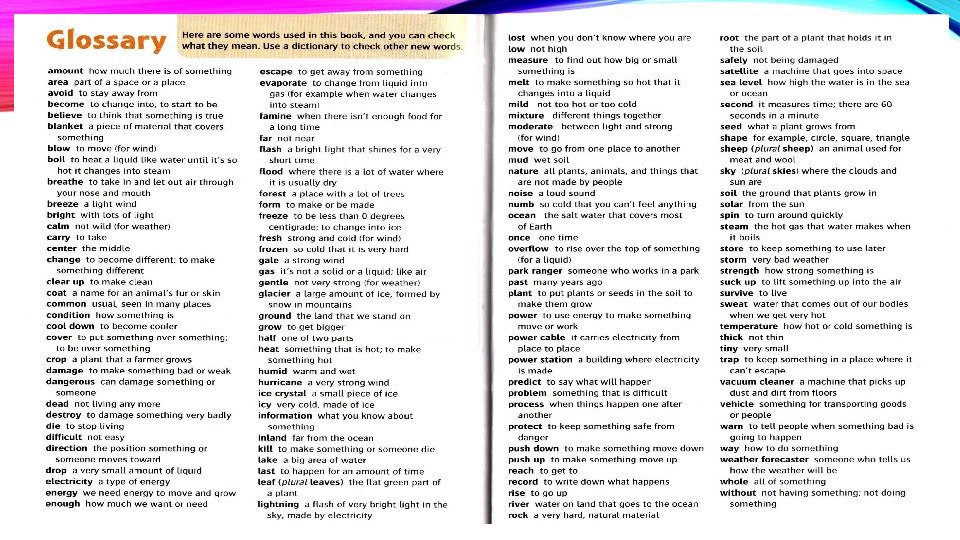
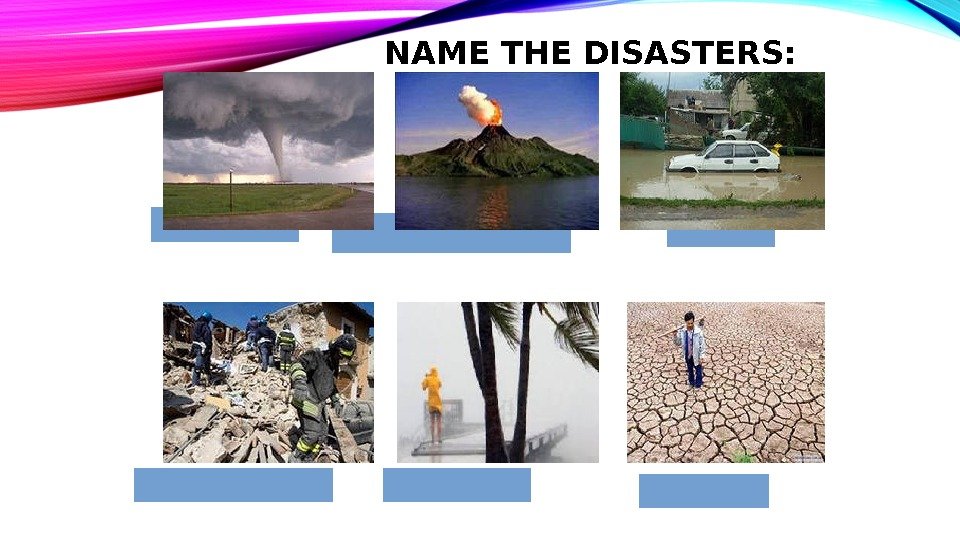
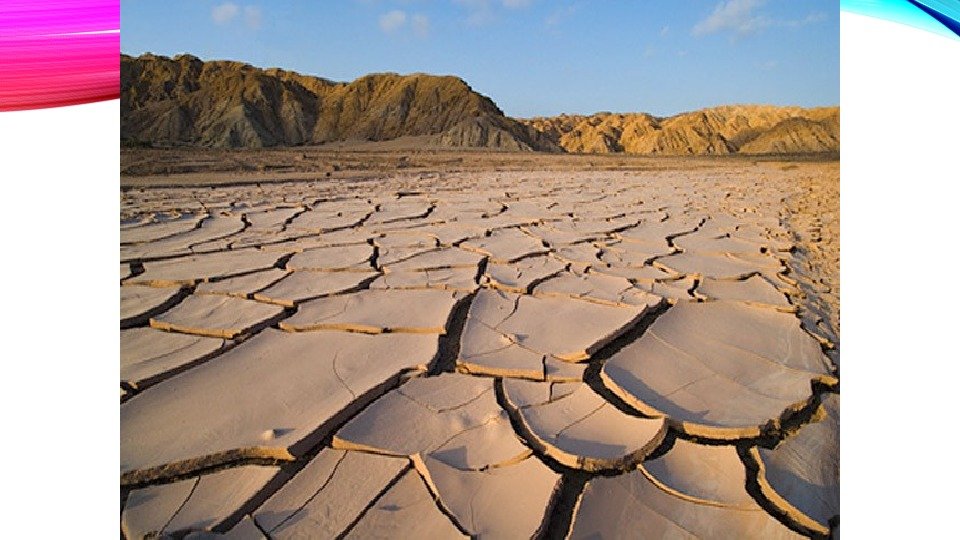
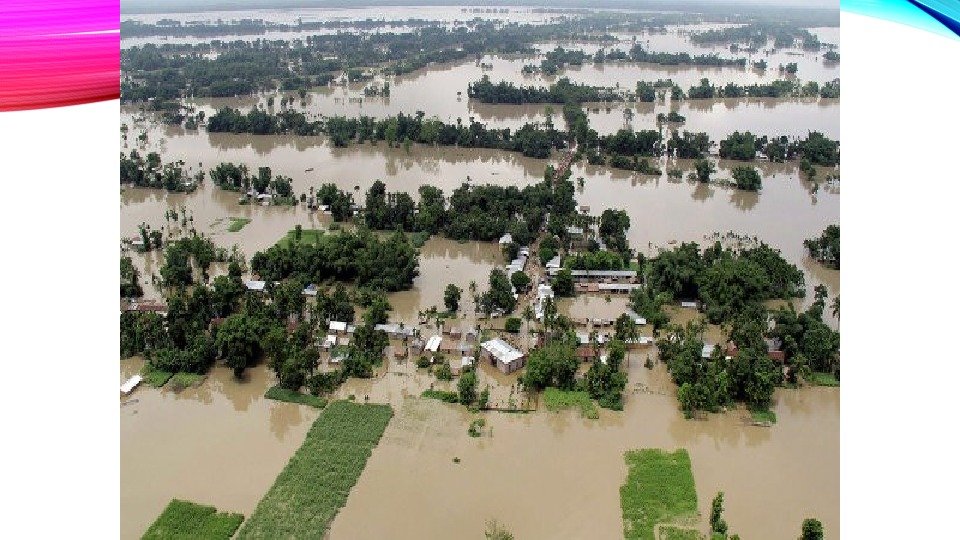
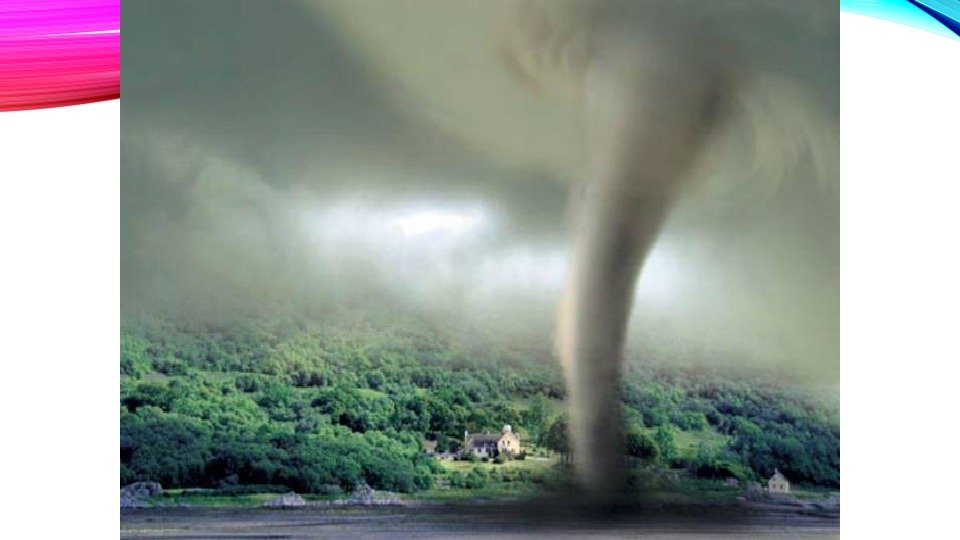
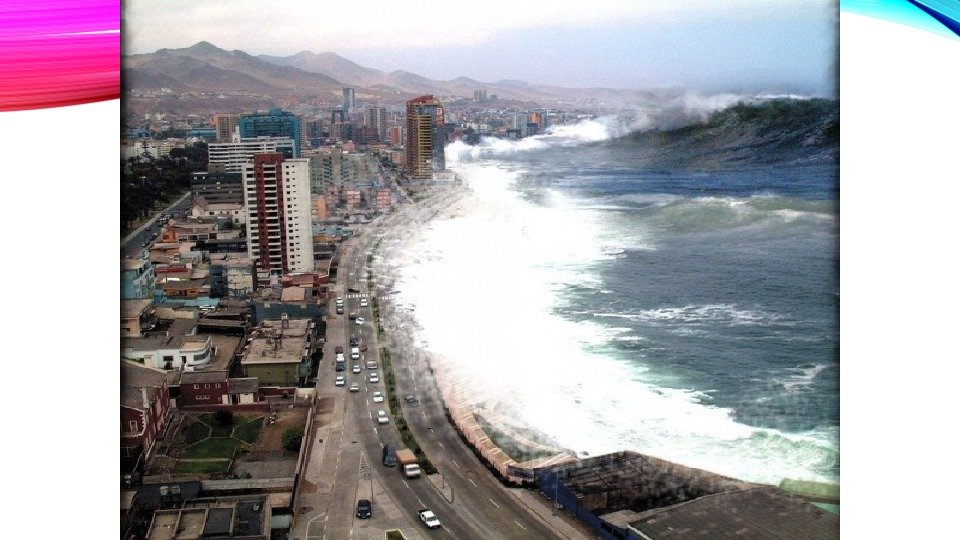
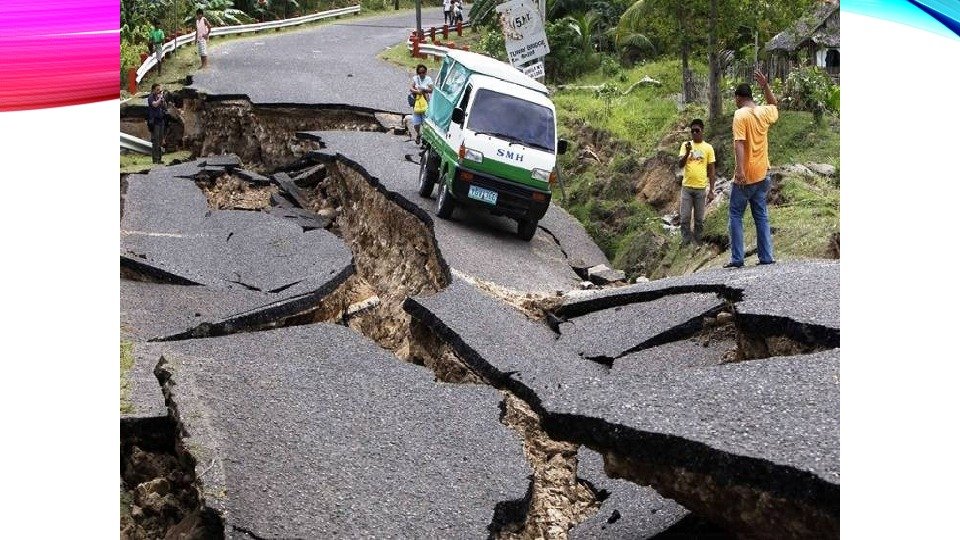
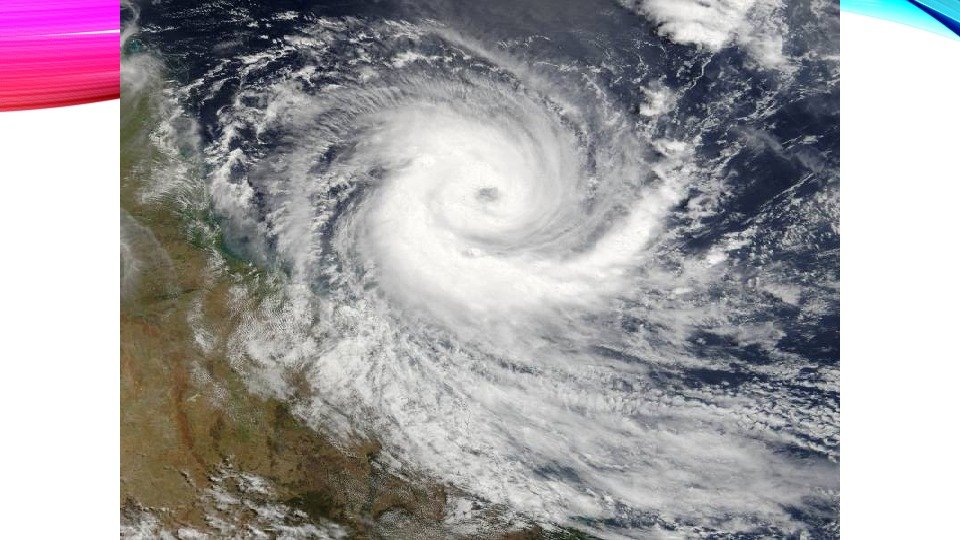
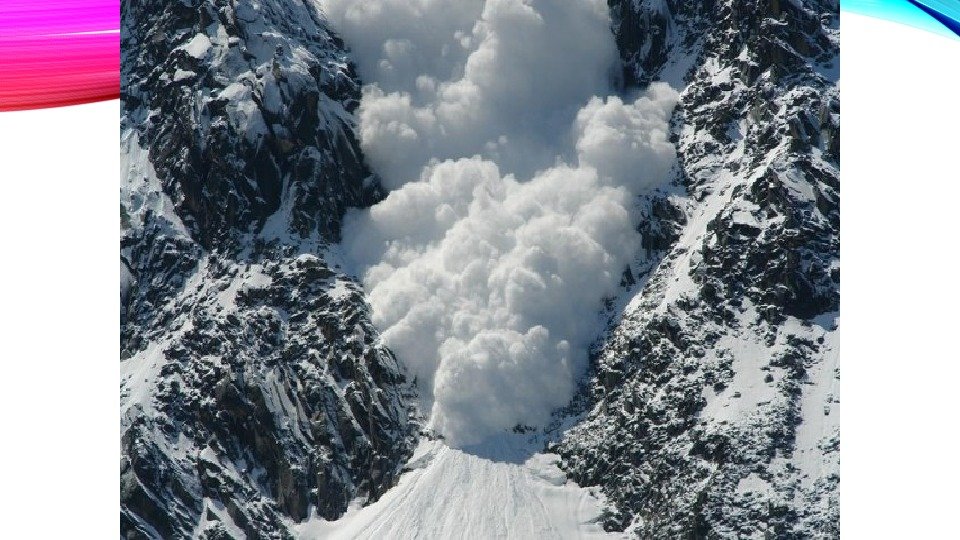

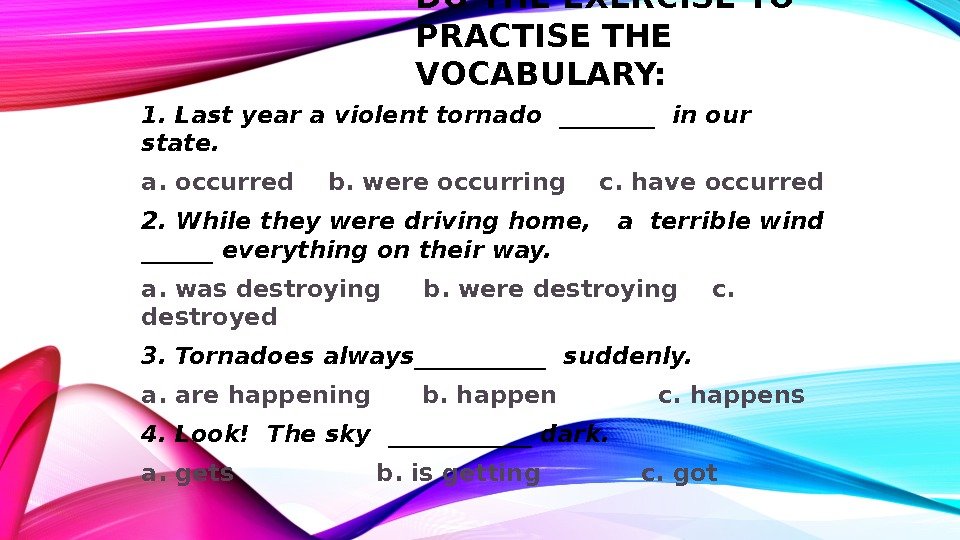
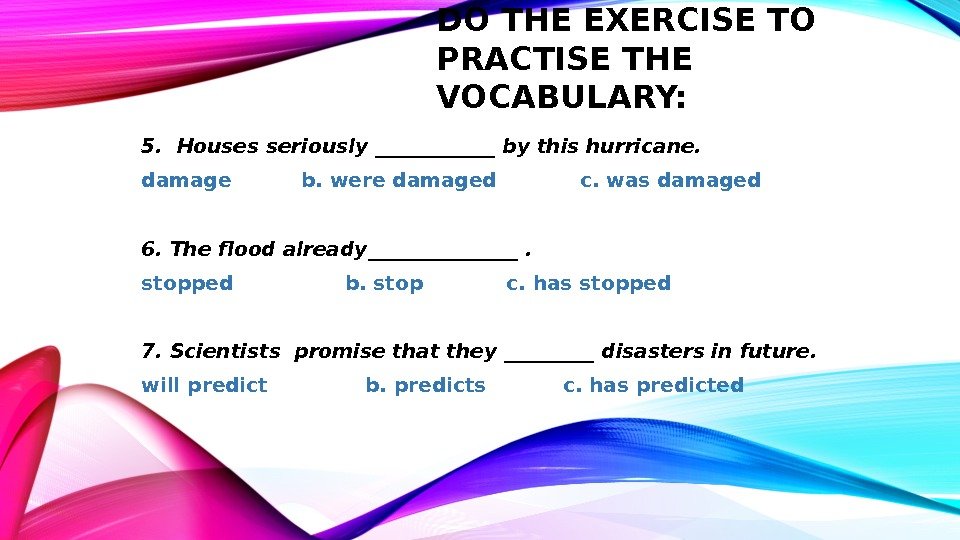
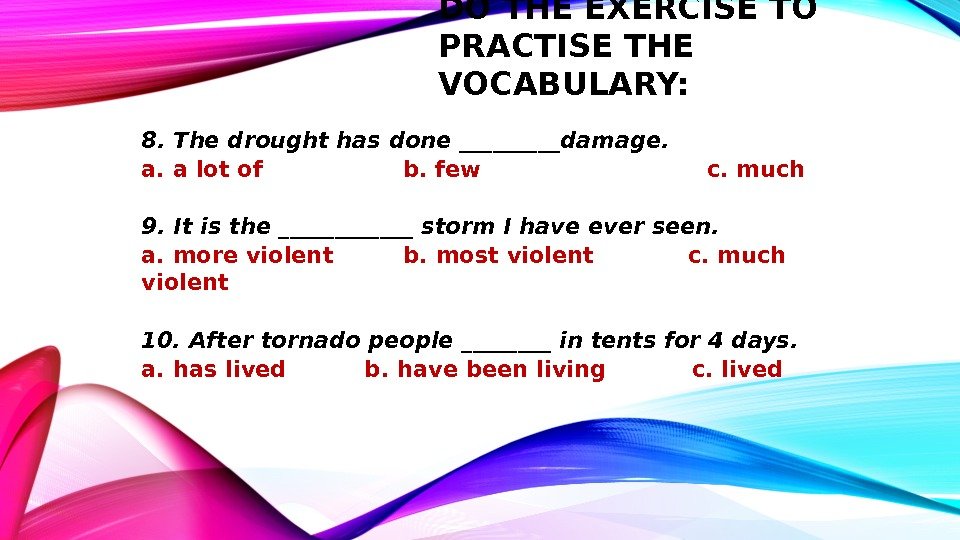
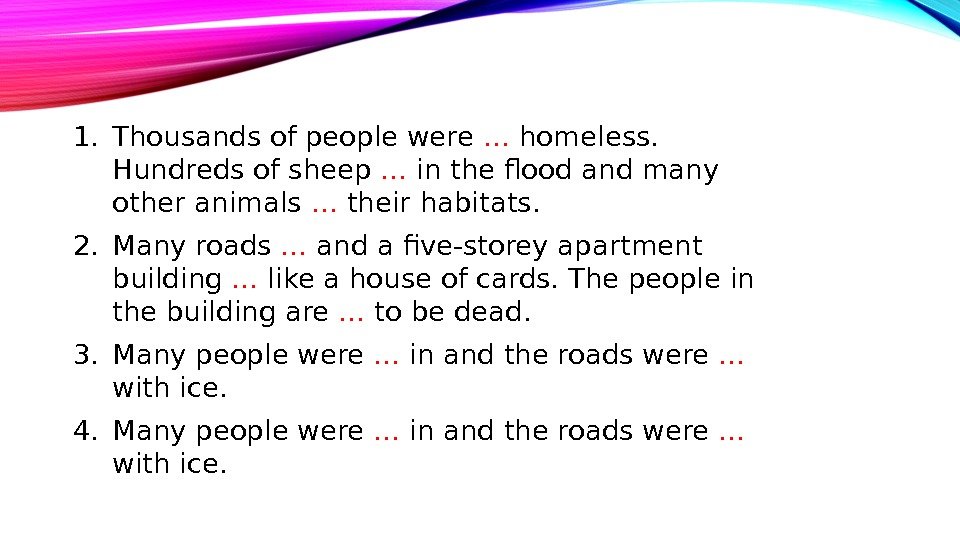
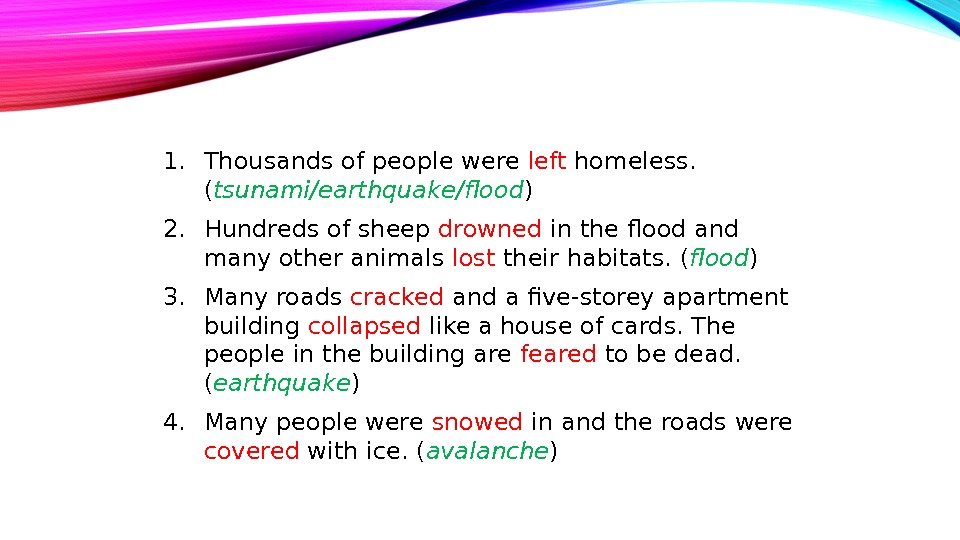
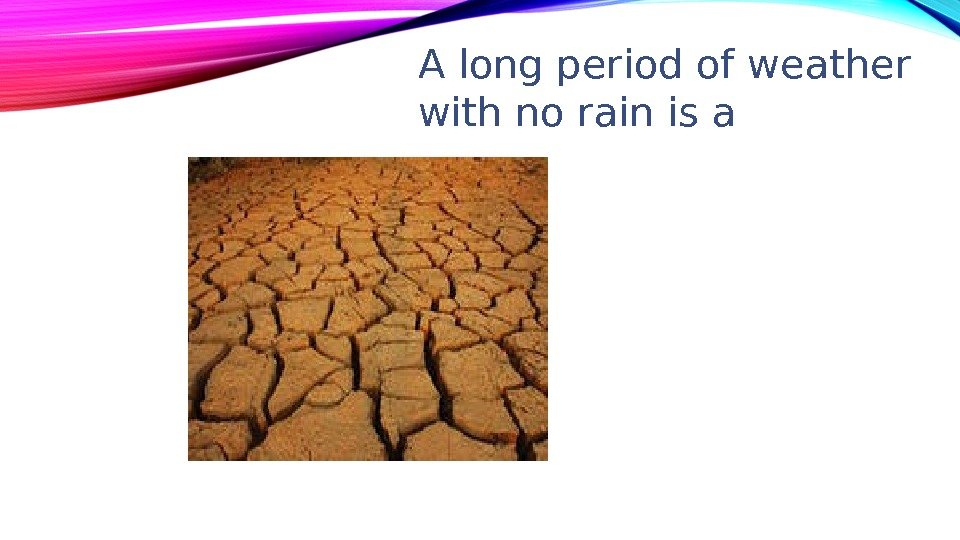
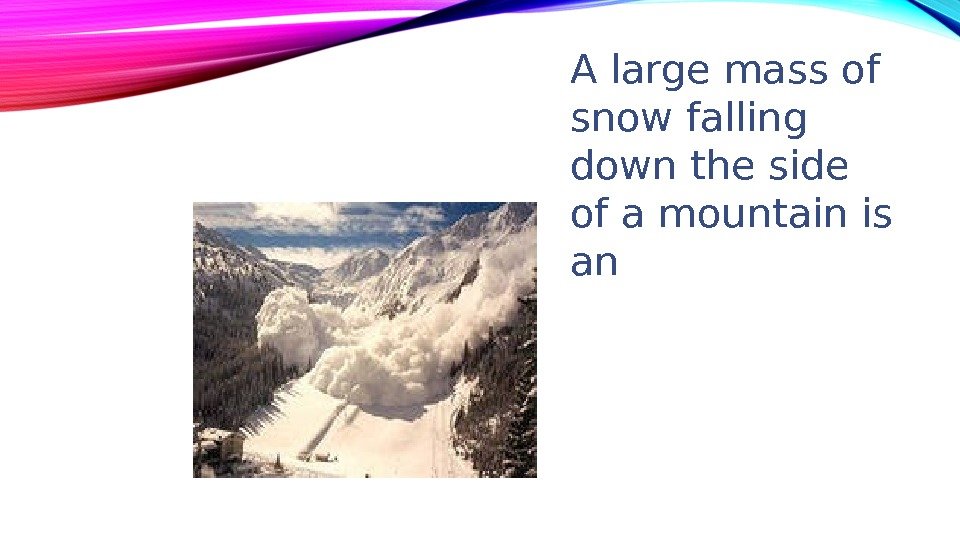

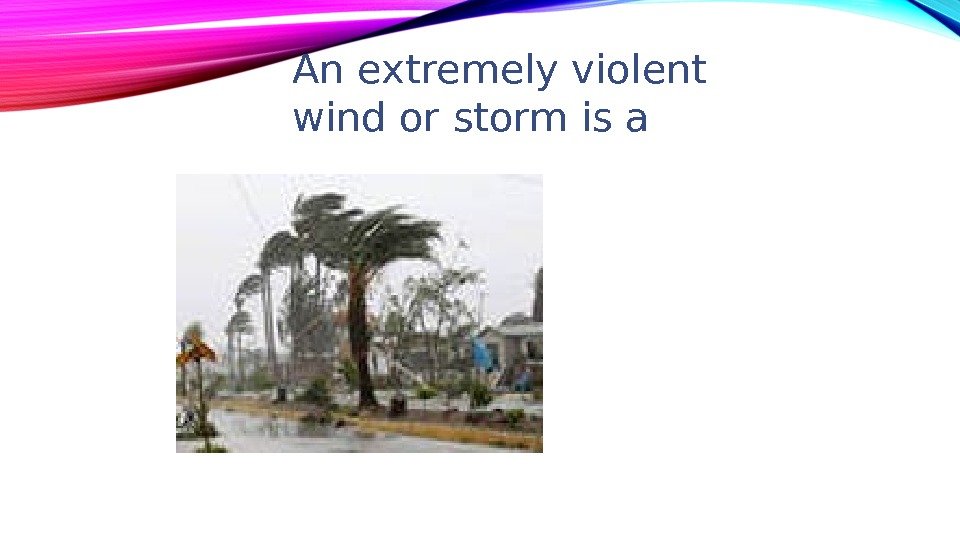

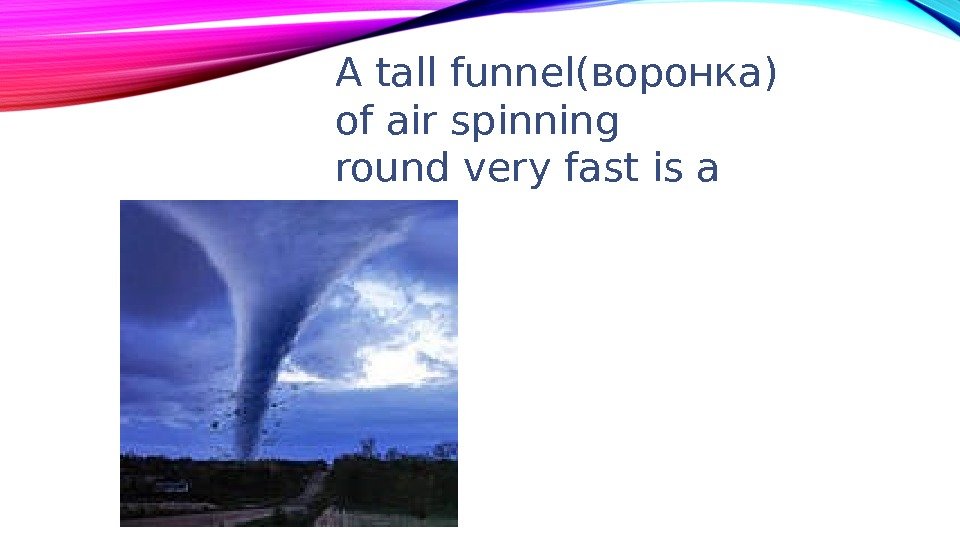
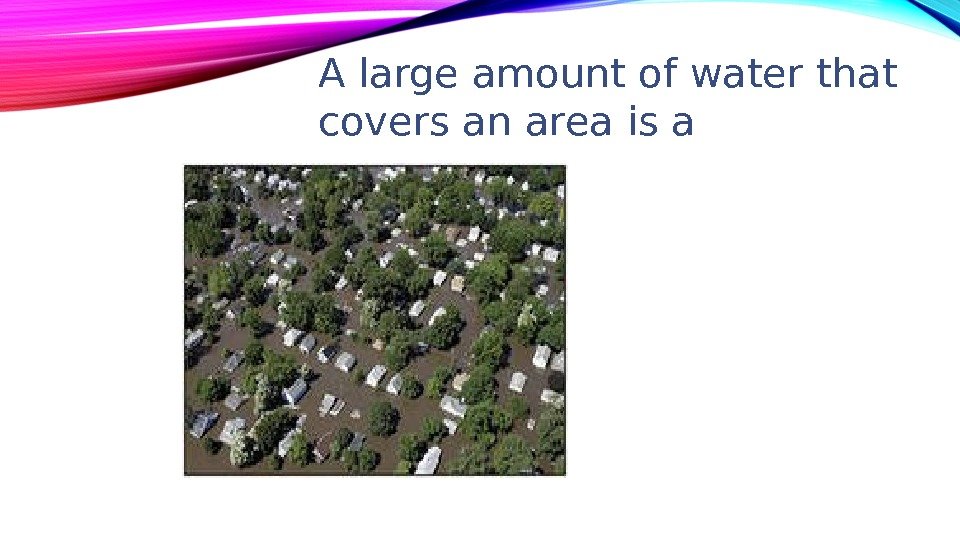
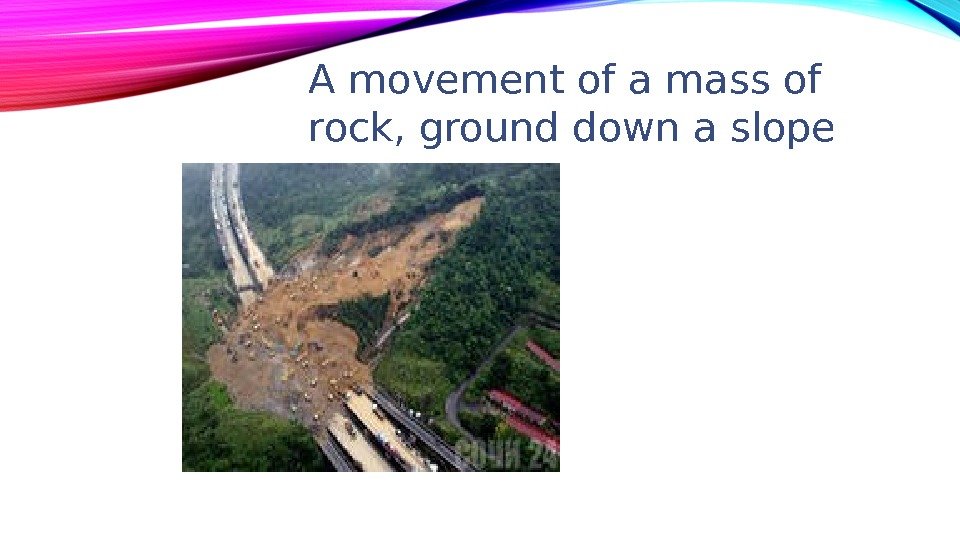
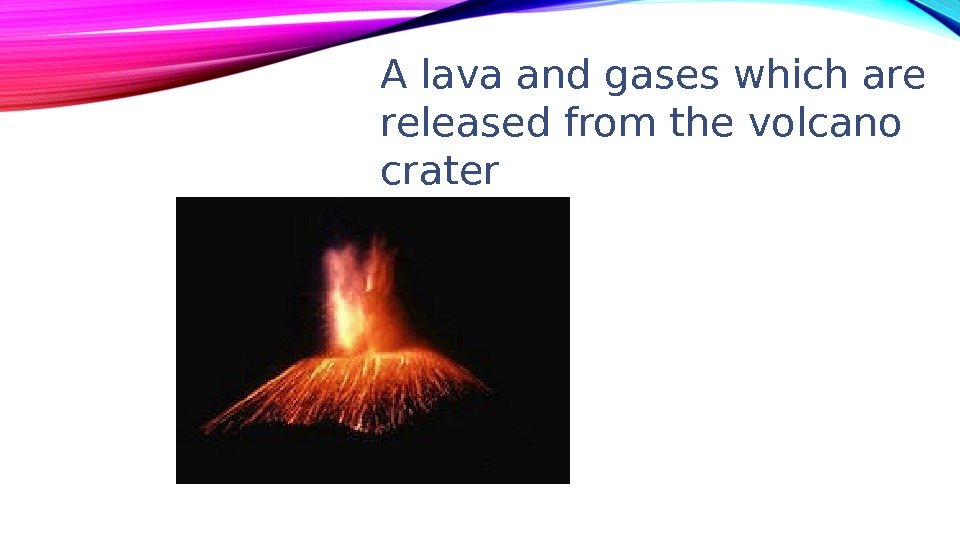
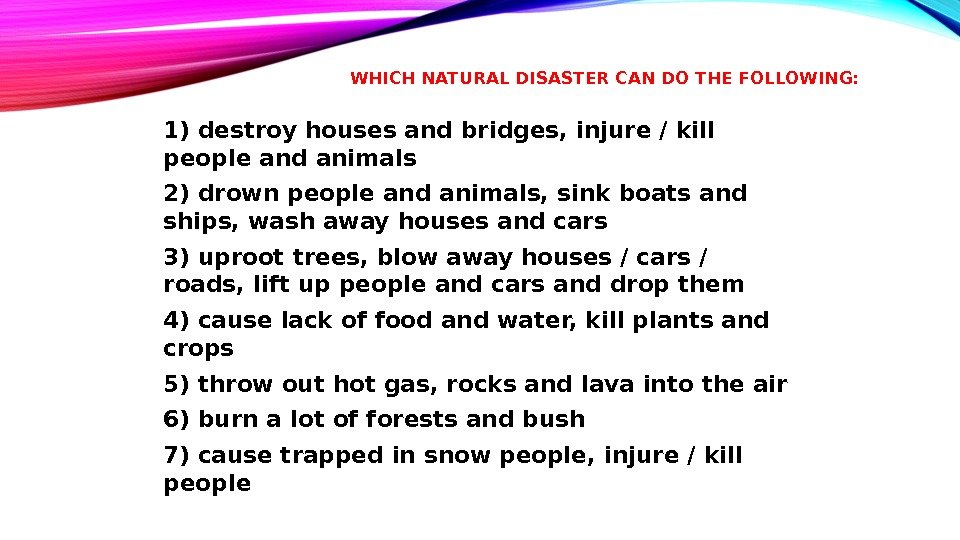
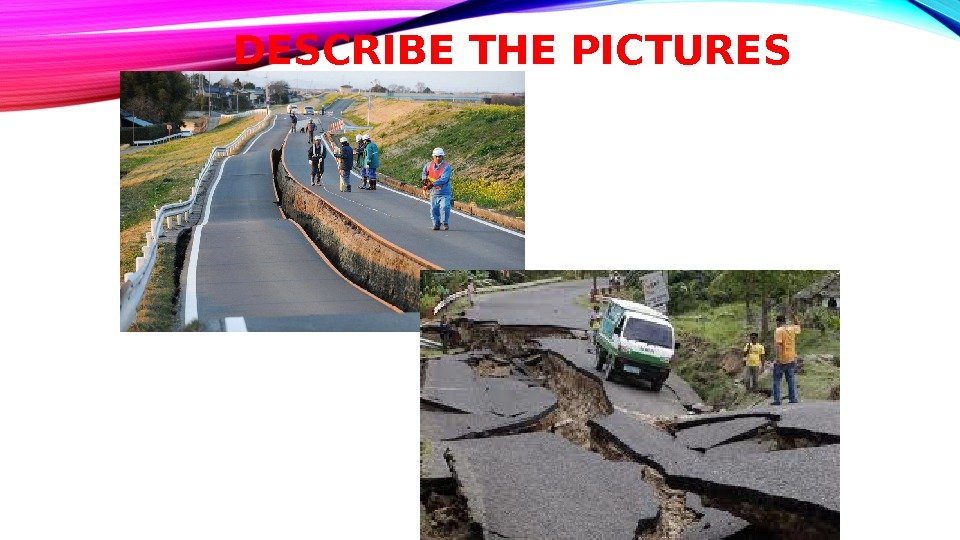
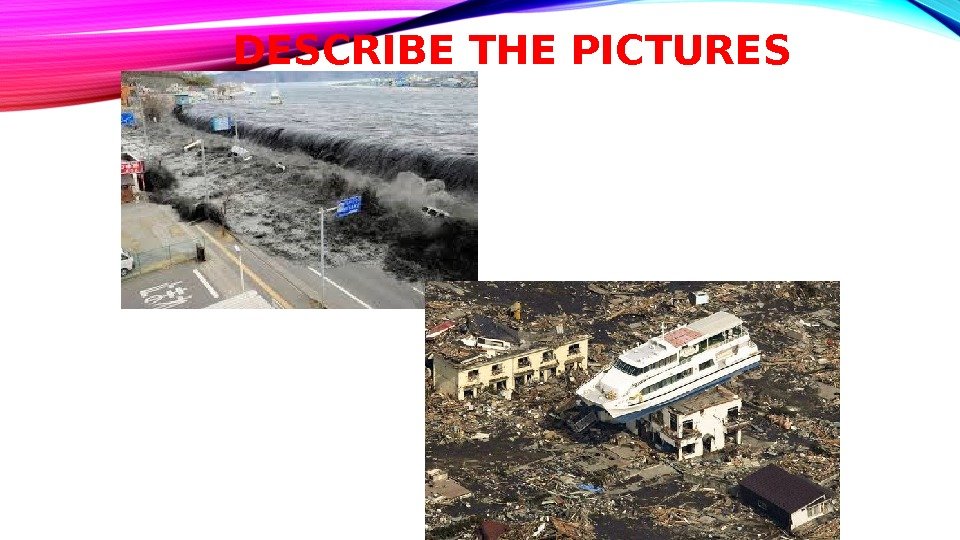

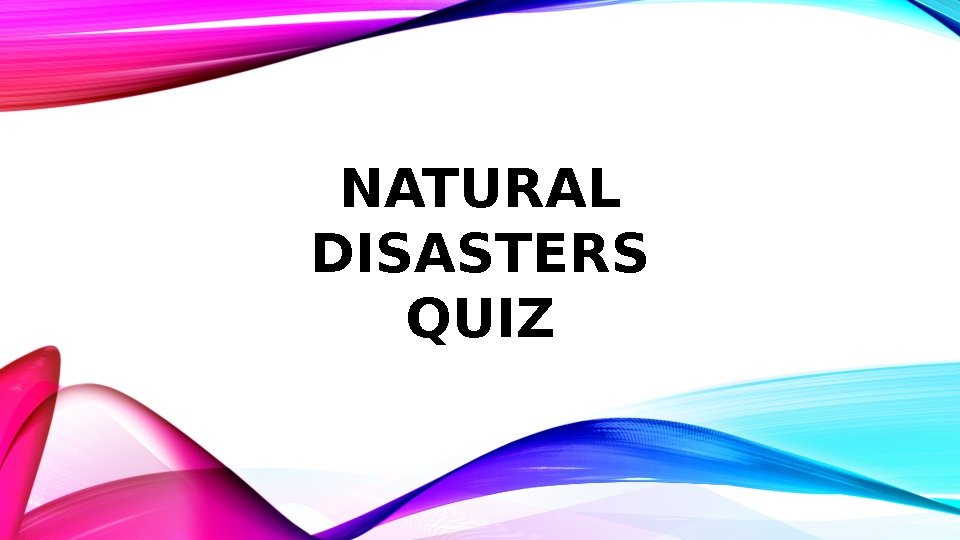
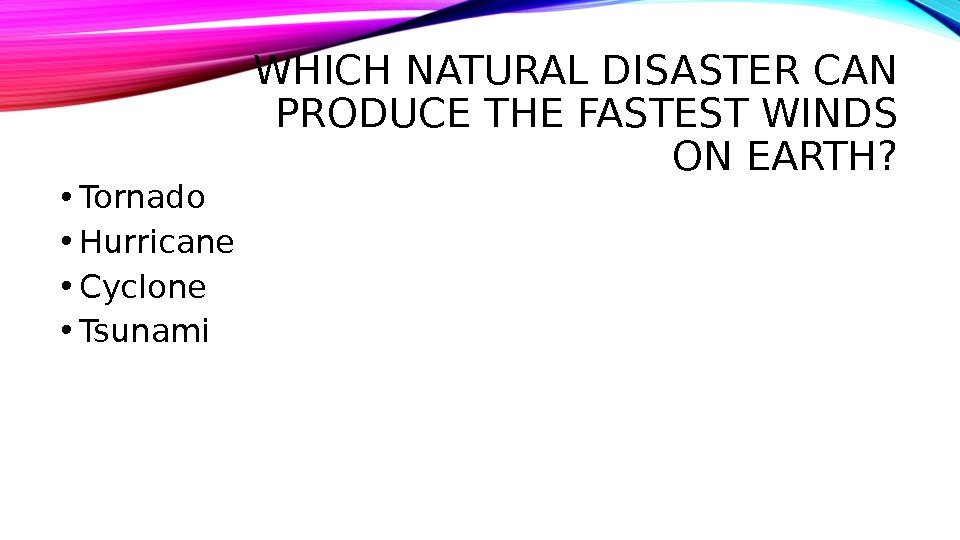
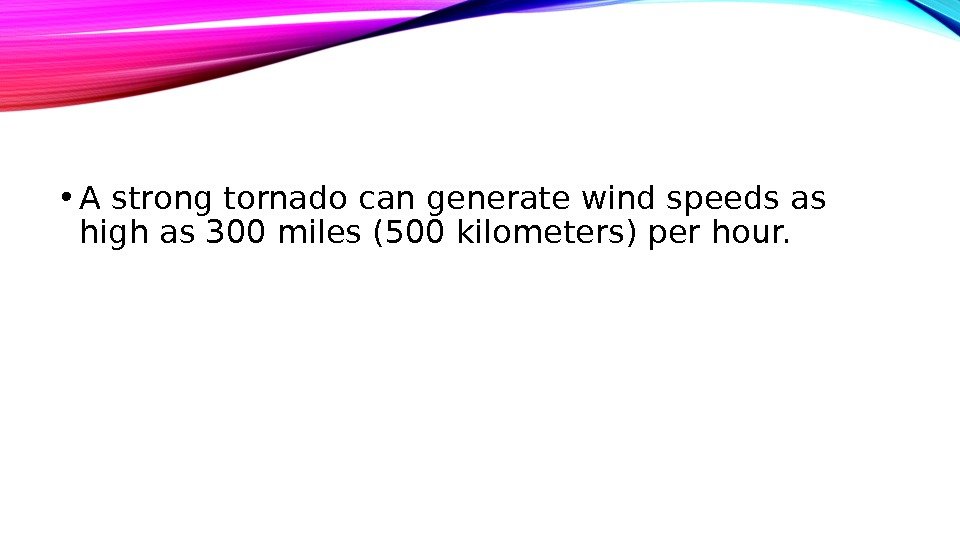
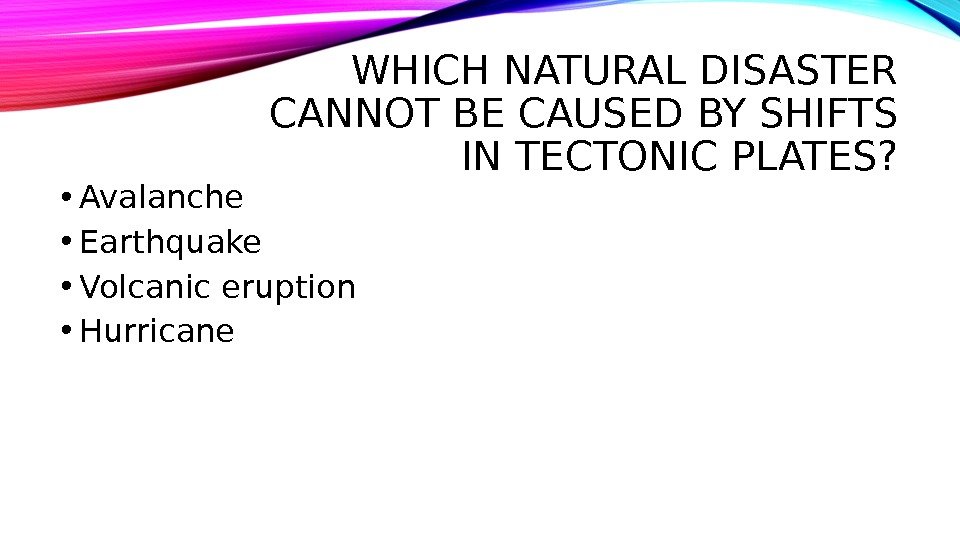
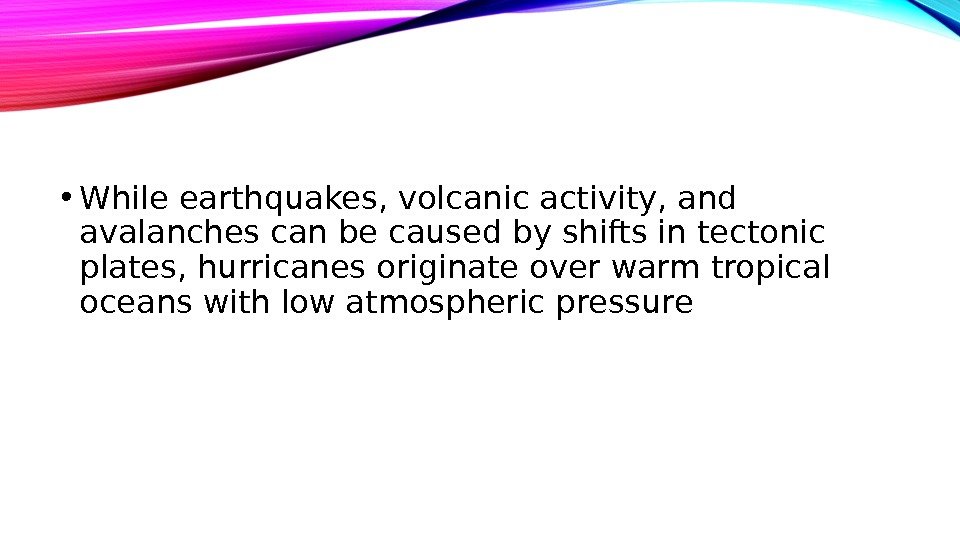

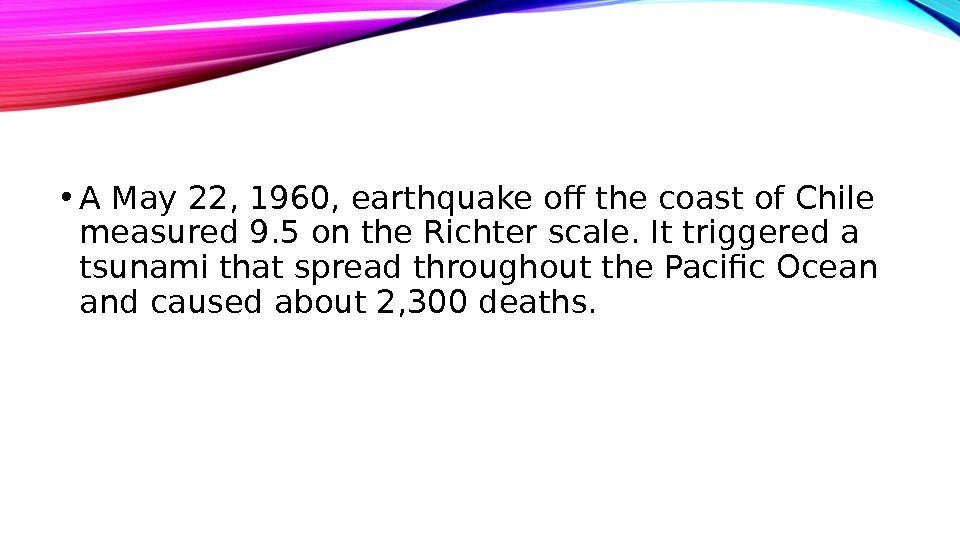
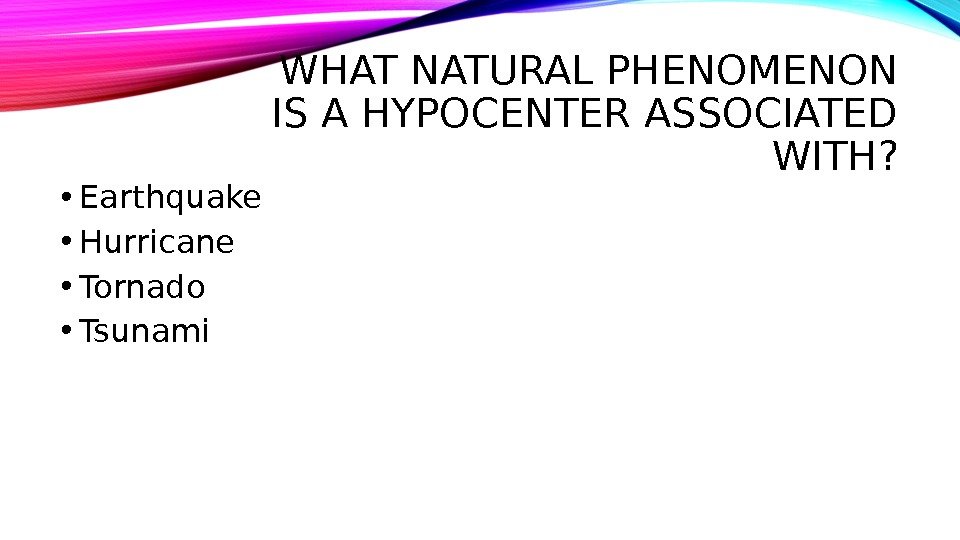
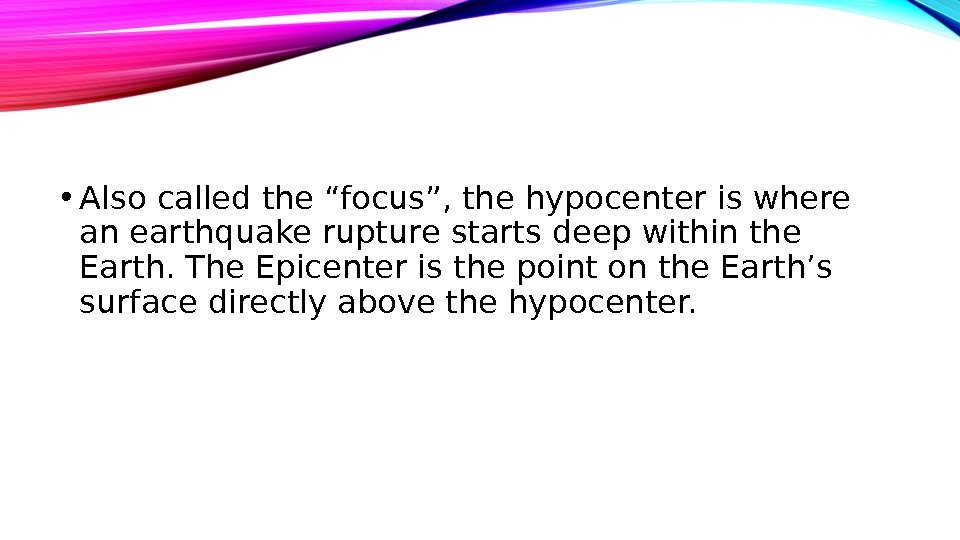
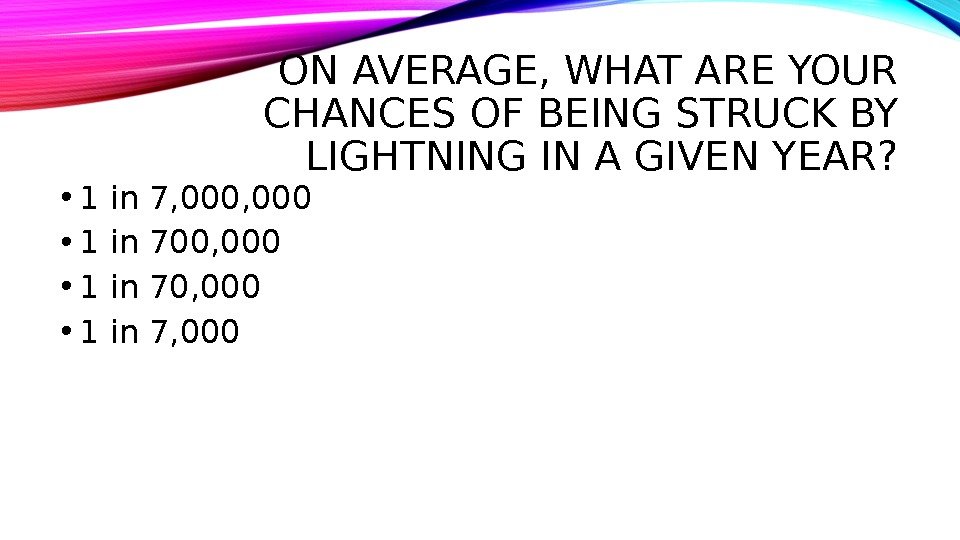
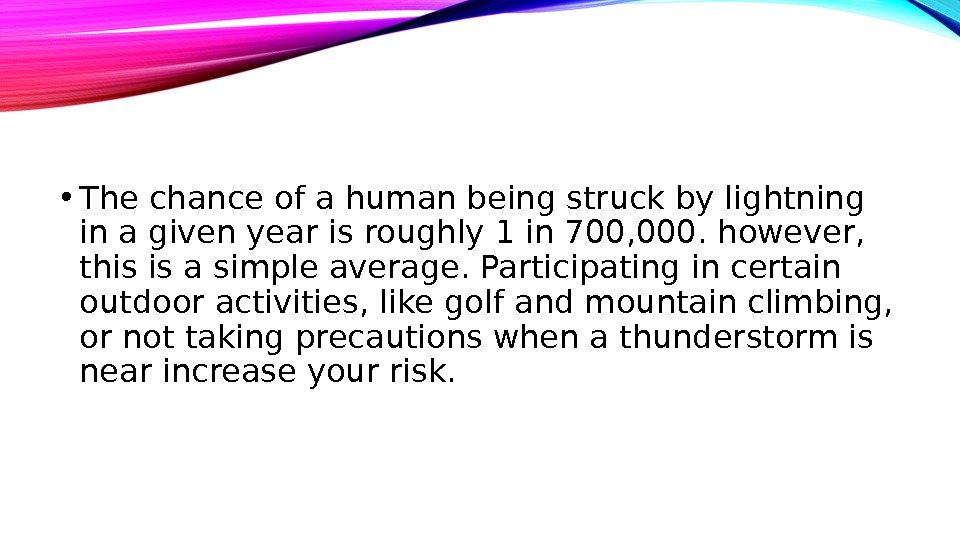
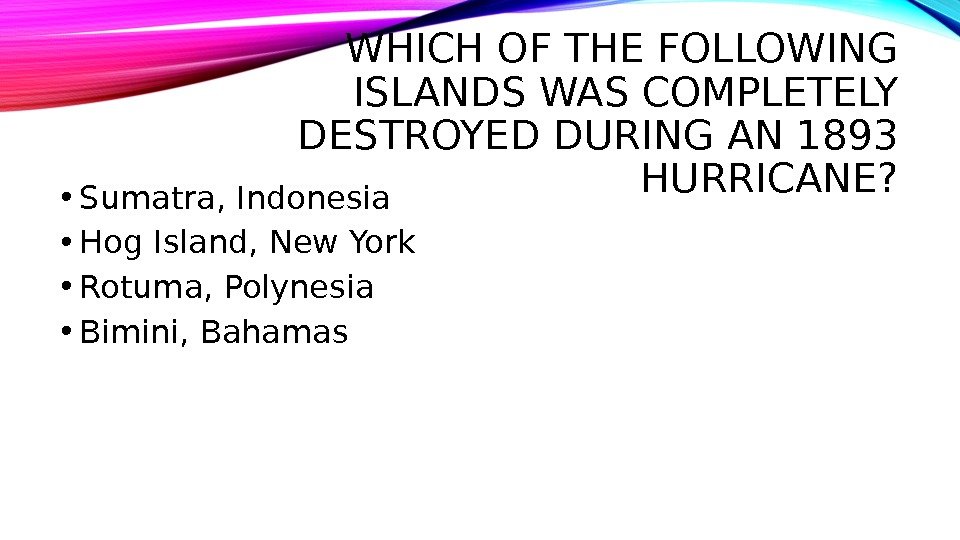
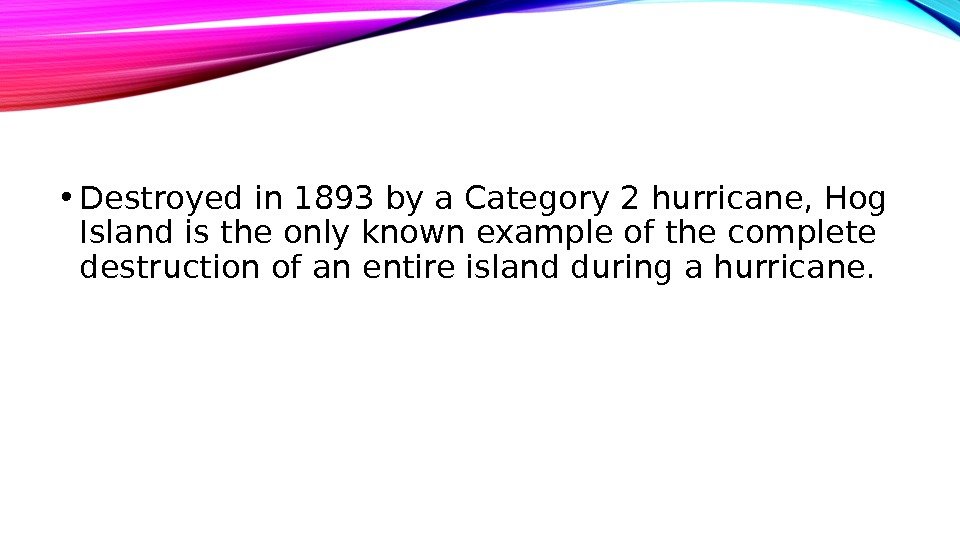
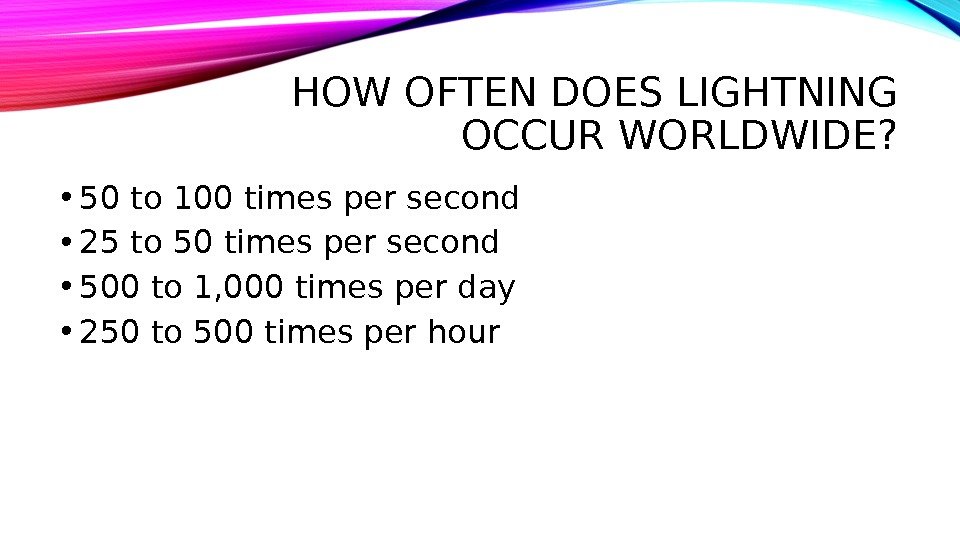
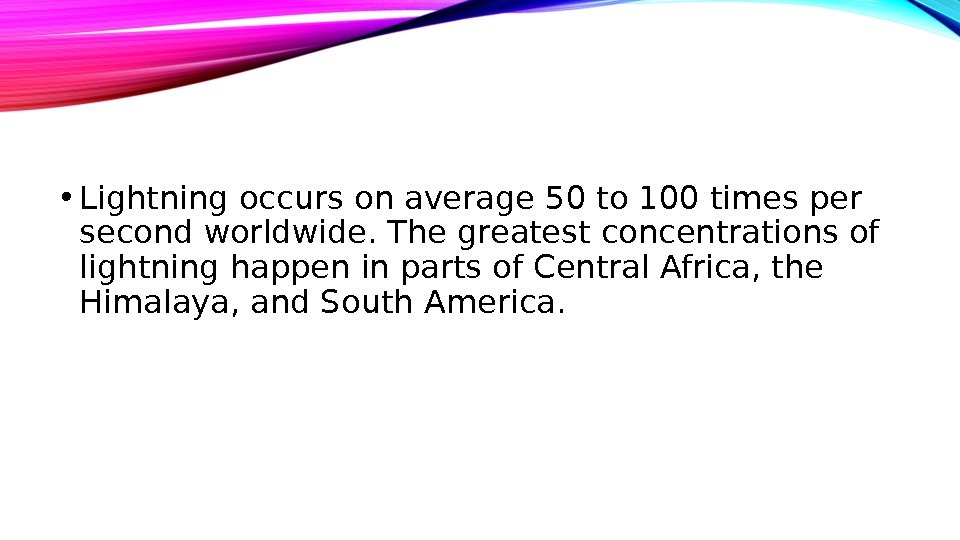
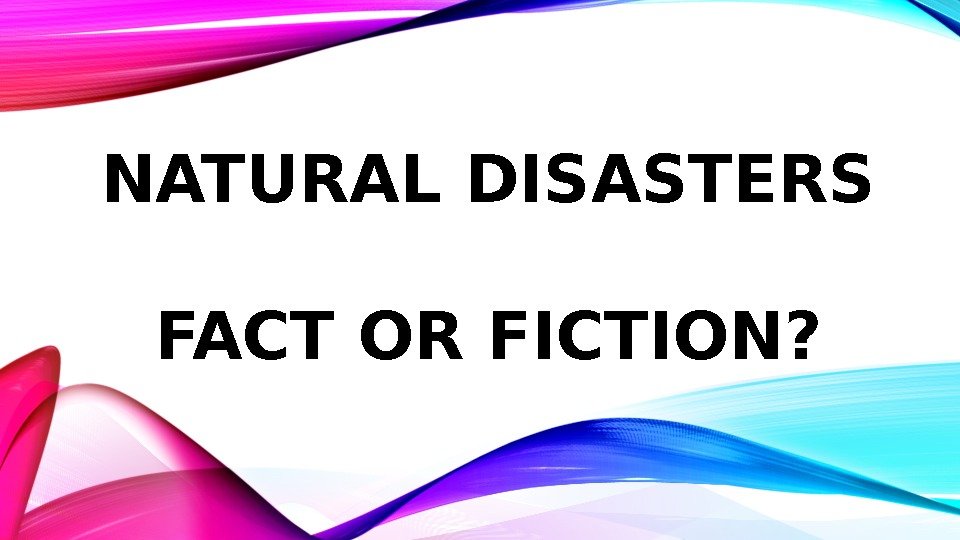
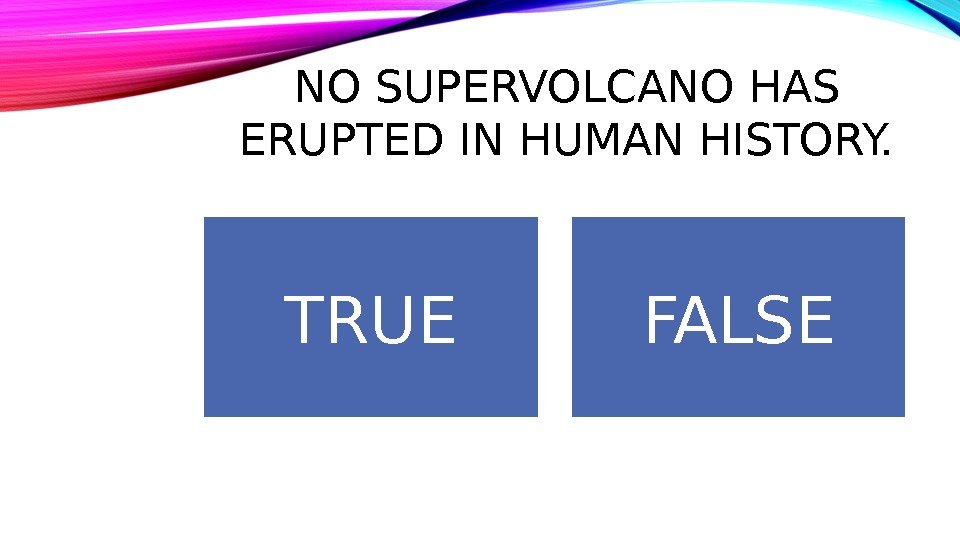
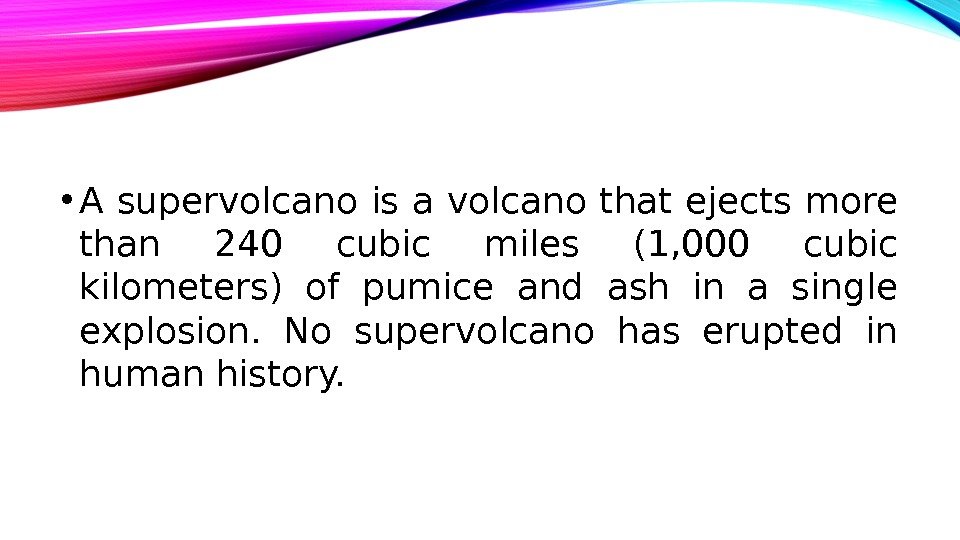
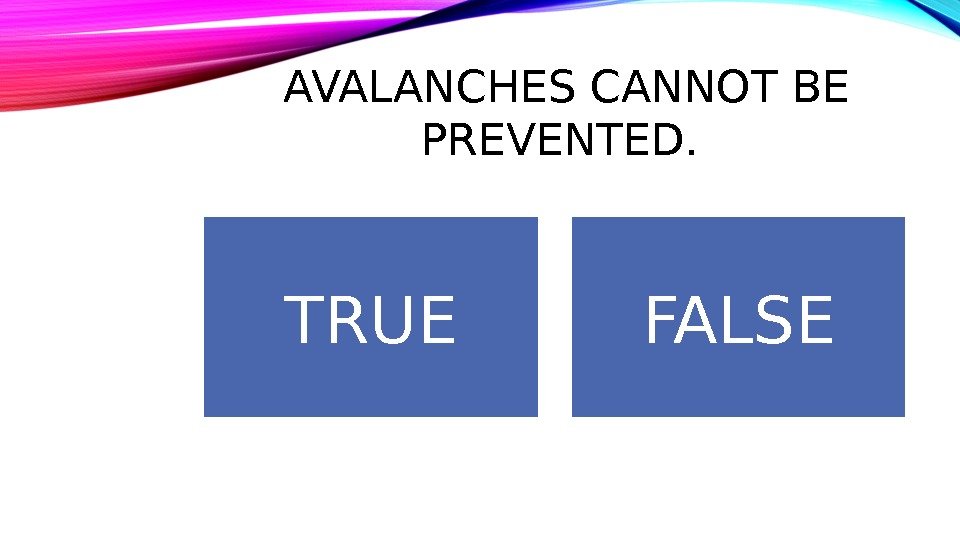
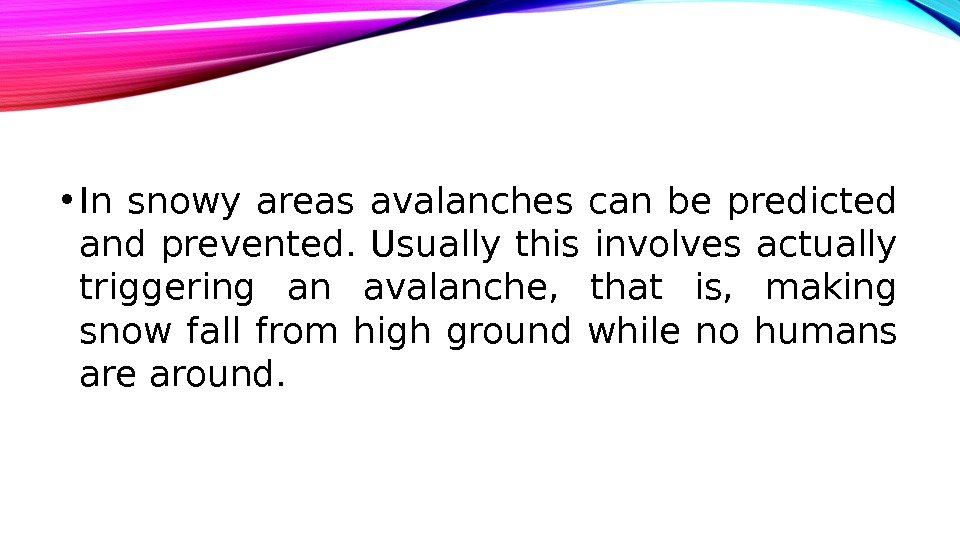
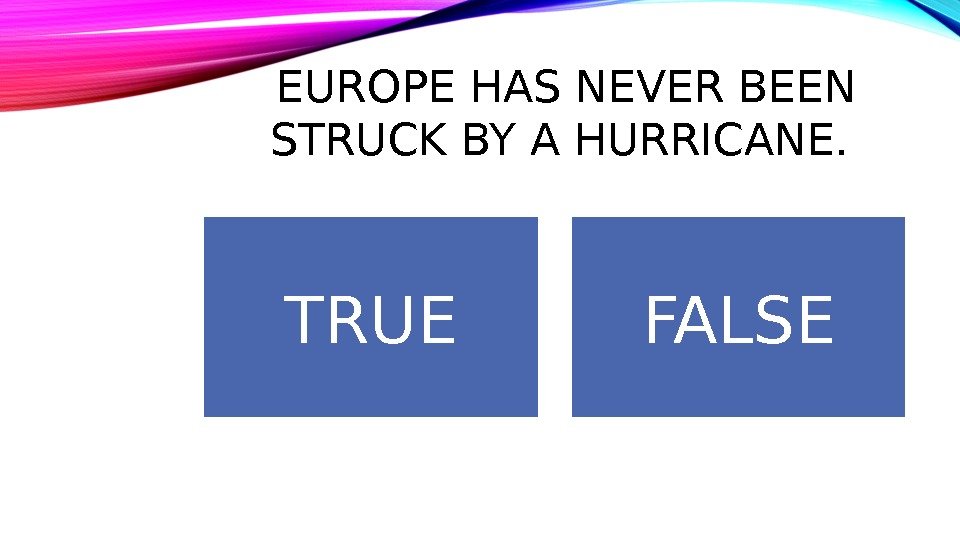

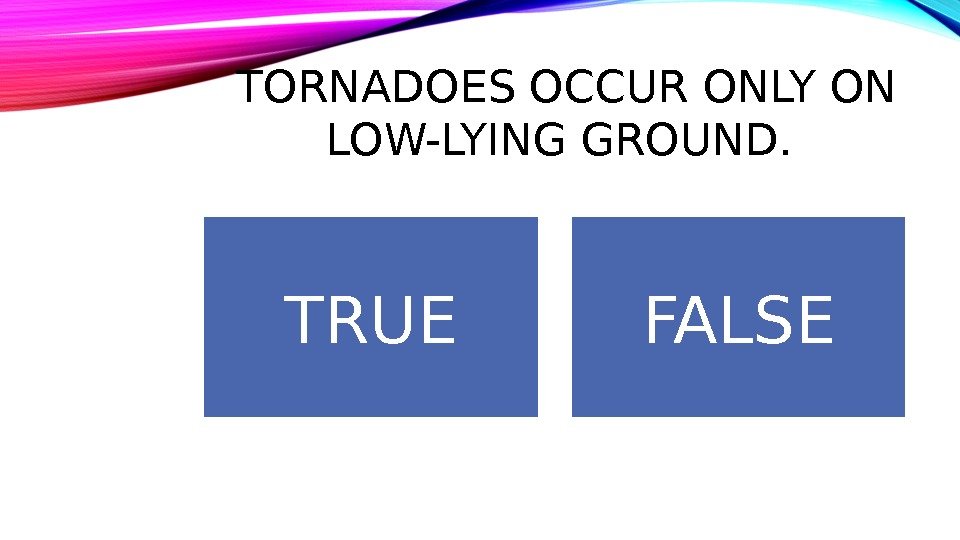
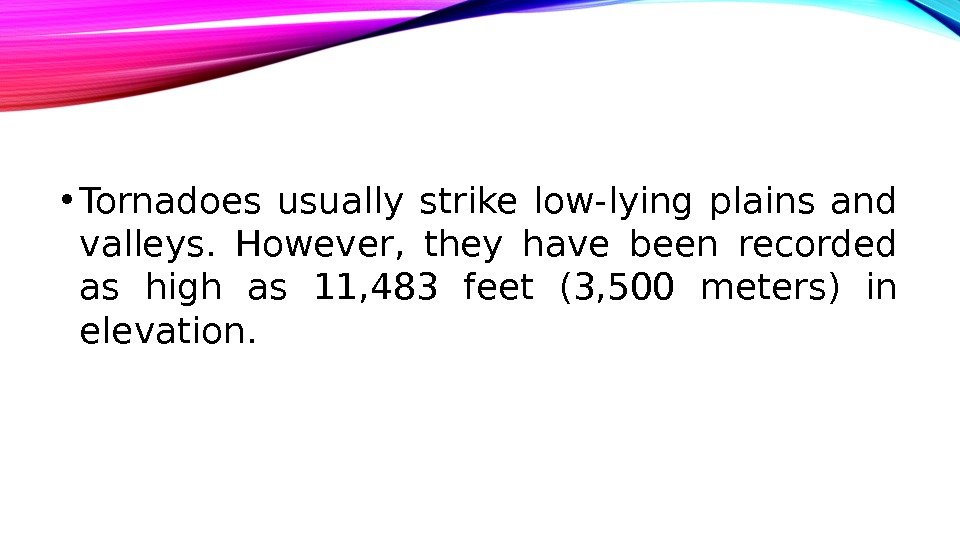
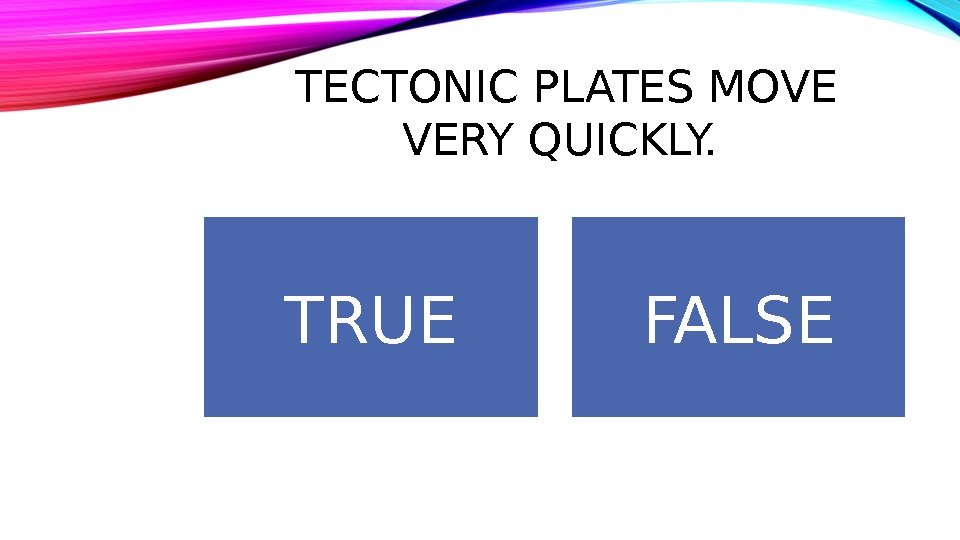

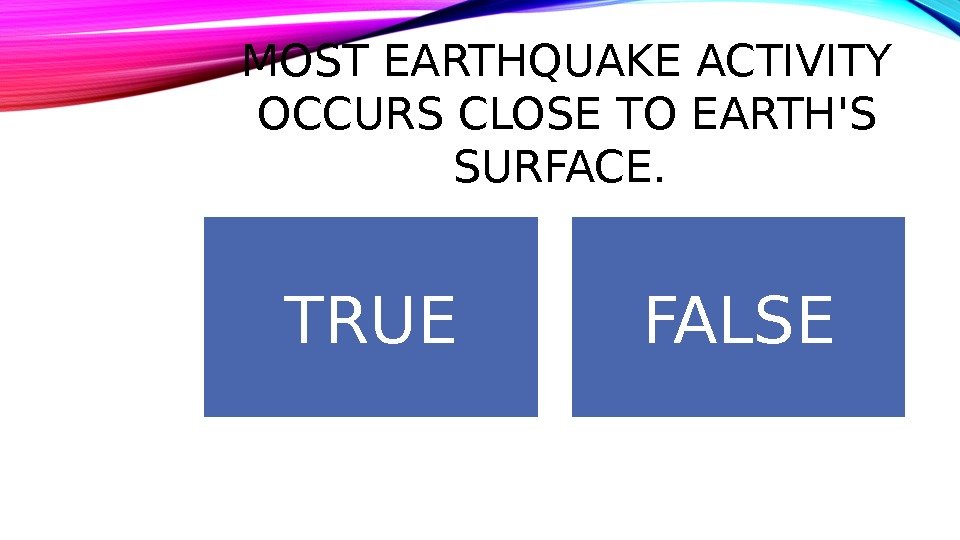

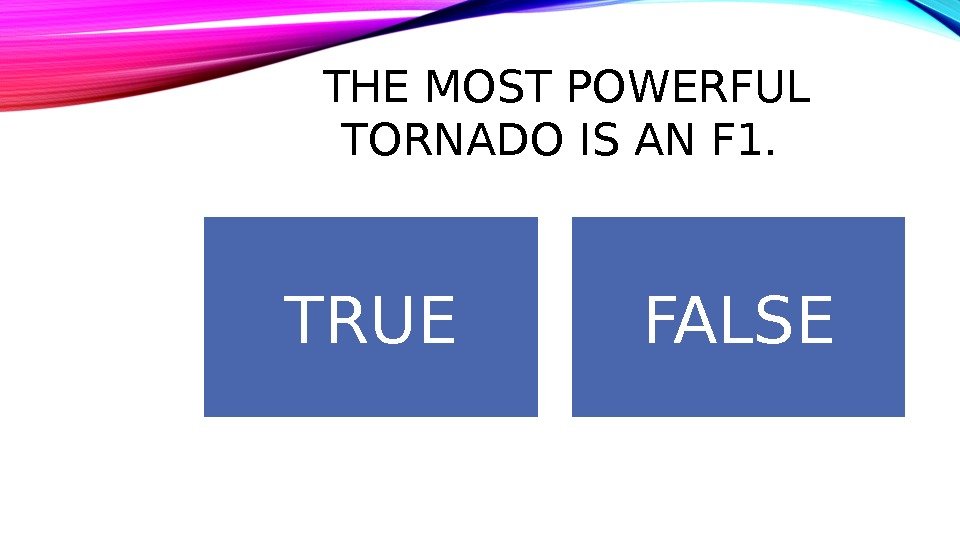
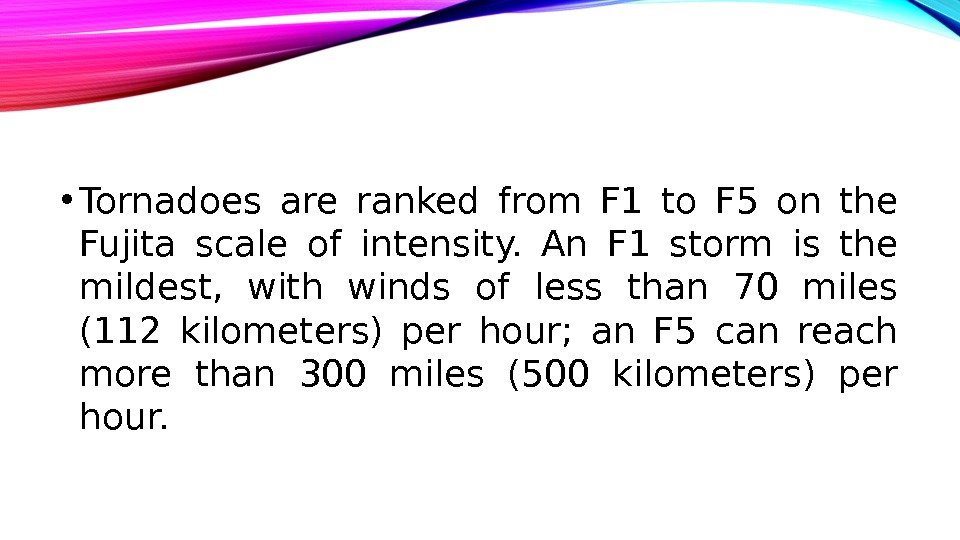
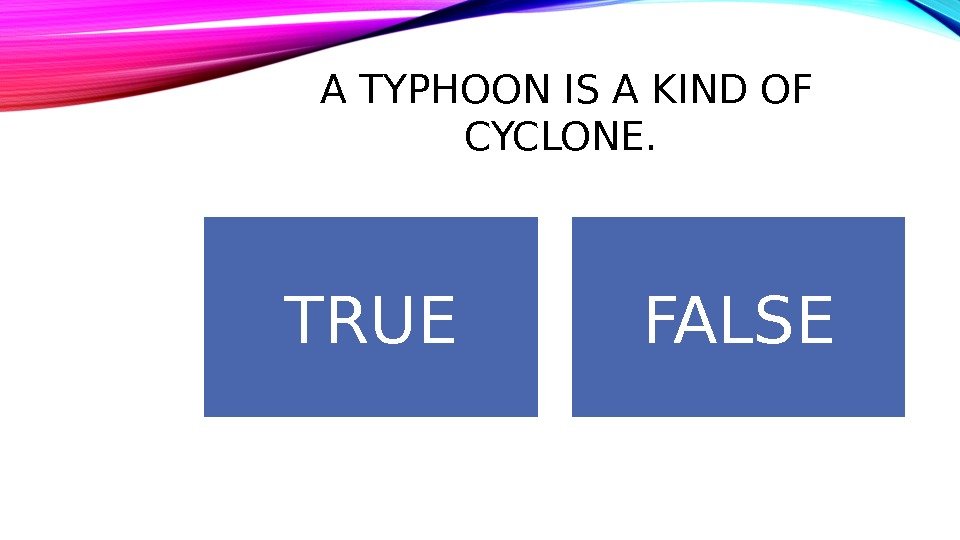
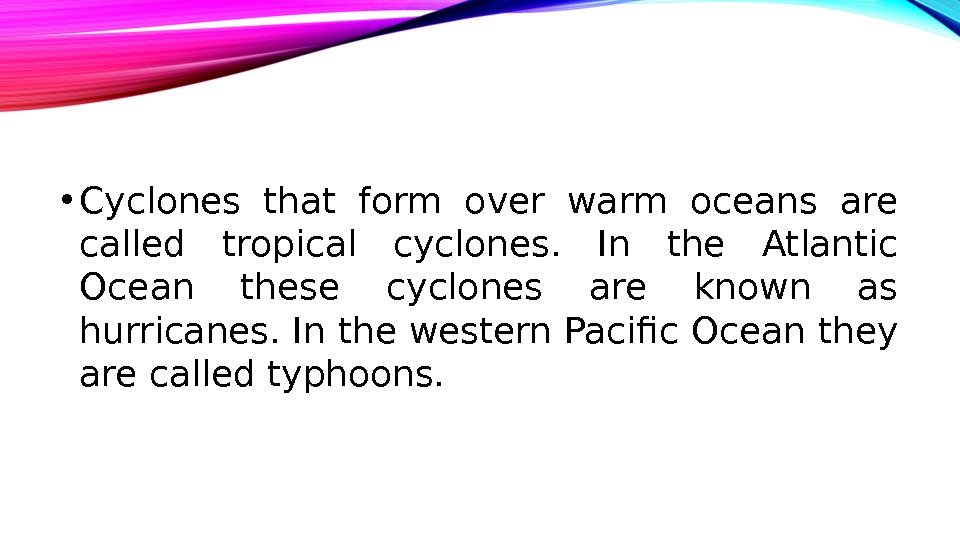
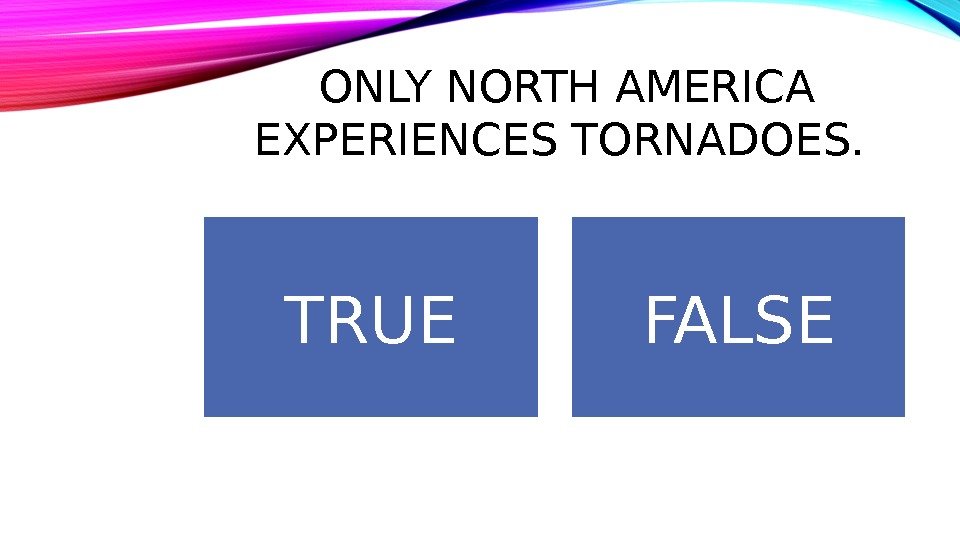
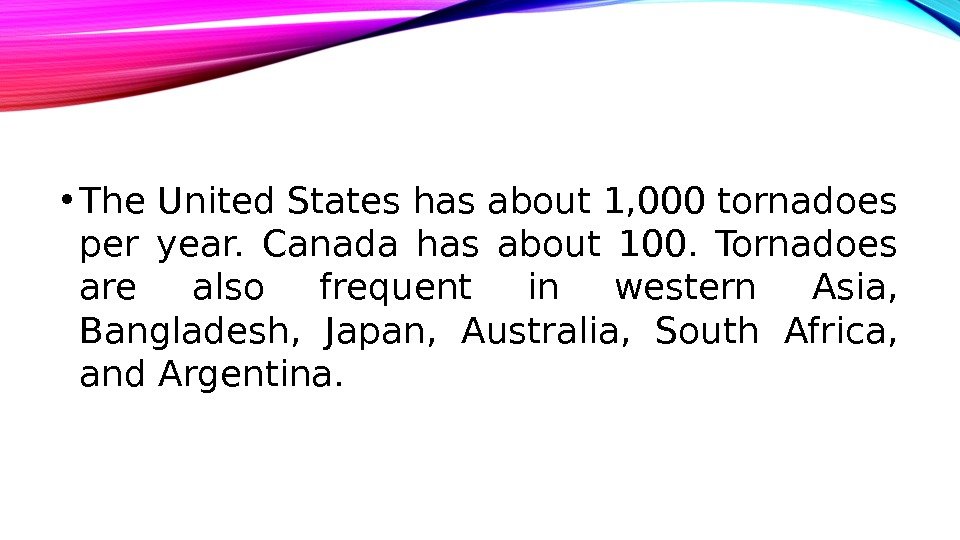
wild_weather_and_natural_disasters.pptx
- Размер: 20.4 Мб
- Автор:
- Количество слайдов: 81
Описание презентации Vashchenko E. A. Natural disasters GLOSSARY по слайдам
 Vashchenko E. A. Natural disasters
Vashchenko E. A. Natural disasters
 GLOSSARY
GLOSSARY


















 NAME THE DISASTERS:
NAME THE DISASTERS:








 DO THE EXERCISE TO PRACTISE THE VOCABULARY: 1. Last year a violent tornado ____ in our state. a. occurred b. were occurring c. have occurred 2. While they were driving home, a terrible wind ______ everything on their way. a. was destroying b. were destroying c. destroyed 3. Tornadoes always______ suddenly. a. are happening b. happen c. happens 4. Look! The sky ______ dark. a. gets b. is getting c. got
DO THE EXERCISE TO PRACTISE THE VOCABULARY: 1. Last year a violent tornado ____ in our state. a. occurred b. were occurring c. have occurred 2. While they were driving home, a terrible wind ______ everything on their way. a. was destroying b. were destroying c. destroyed 3. Tornadoes always______ suddenly. a. are happening b. happen c. happens 4. Look! The sky ______ dark. a. gets b. is getting c. got
 DO THE EXERCISE TO PRACTISE THE VOCABULARY: 5. Houses seriously ______ by this hurricane. damage b. were damaged c. was damaged 6. The flood already________. stopped b. stop c. has stopped 7. Scientists promise that they _____ disasters in future. will predict b. predicts c. has predicted
DO THE EXERCISE TO PRACTISE THE VOCABULARY: 5. Houses seriously ______ by this hurricane. damage b. were damaged c. was damaged 6. The flood already________. stopped b. stop c. has stopped 7. Scientists promise that they _____ disasters in future. will predict b. predicts c. has predicted
 DO THE EXERCISE TO PRACTISE THE VOCABULARY: 8. The drought has done _____damage. a. a lot of b. few c. much 9. It is the ______ storm I have ever seen. a. more violent b. most violent c. much violent 10. After tornado people ____ in tents for 4 days. a. has lived b. have been living c. lived
DO THE EXERCISE TO PRACTISE THE VOCABULARY: 8. The drought has done _____damage. a. a lot of b. few c. much 9. It is the ______ storm I have ever seen. a. more violent b. most violent c. much violent 10. After tornado people ____ in tents for 4 days. a. has lived b. have been living c. lived
 1. Thousands of people were … homeless. Hundreds of sheep … in the flood and many other animals … their habitats. 2. Many roads … and a five-storey apartment building … like a house of cards. The people in the building are … to be dead. 3. Many people were … in and the roads were … with ice. 4. Many people were … in and the roads were … with ice.
1. Thousands of people were … homeless. Hundreds of sheep … in the flood and many other animals … their habitats. 2. Many roads … and a five-storey apartment building … like a house of cards. The people in the building are … to be dead. 3. Many people were … in and the roads were … with ice. 4. Many people were … in and the roads were … with ice.
 1. Thousands of people were left homeless. ( tsunami/earthquake/flood ) 2. Hundreds of sheep drowned in the flood and many other animals lost their habitats. ( flood ) 3. Many roads cracked and a five-storey apartment building collapsed like a house of cards. The people in the building are feared to be dead. ( earthquake ) 4. Many people were snowed in and the roads were covered with ice. ( avalanche )
1. Thousands of people were left homeless. ( tsunami/earthquake/flood ) 2. Hundreds of sheep drowned in the flood and many other animals lost their habitats. ( flood ) 3. Many roads cracked and a five-storey apartment building collapsed like a house of cards. The people in the building are feared to be dead. ( earthquake ) 4. Many people were snowed in and the roads were covered with ice. ( avalanche )
 A long period of weather with no rain is a
A long period of weather with no rain is a
 A large mass of snow falling down the side of a mountain is an
A large mass of snow falling down the side of a mountain is an
 A sudden shaking of the ground is an
A sudden shaking of the ground is an
 An extremely violent wind or storm is a
An extremely violent wind or storm is a
 A huge wave caused by an earthquake which flows onto land is a
A huge wave caused by an earthquake which flows onto land is a
 A tall funnel(воронка) of air spinning round very fast is a
A tall funnel(воронка) of air spinning round very fast is a
 A large amount of water that covers an area is a
A large amount of water that covers an area is a
 A movement of a mass of rock, ground down a slope
A movement of a mass of rock, ground down a slope
 A lava and gases which are released from the volcano crater
A lava and gases which are released from the volcano crater
 WHICH NATURAL DISASTER CAN DO THE FOLLOWING: 1) destroy houses and bridges, injure / kill people and animals 2) drown people and animals, sink boats and ships, wash away houses and cars 3) uproot trees, blow away houses / cars / roads, lift up people and cars and drop them 4) cause lack of food and water, kill plants and crops 5) throw out hot gas, rocks and lava into the air 6) burn a lot of forests and bush 7) cause trapped in snow people, injure / kill people
WHICH NATURAL DISASTER CAN DO THE FOLLOWING: 1) destroy houses and bridges, injure / kill people and animals 2) drown people and animals, sink boats and ships, wash away houses and cars 3) uproot trees, blow away houses / cars / roads, lift up people and cars and drop them 4) cause lack of food and water, kill plants and crops 5) throw out hot gas, rocks and lava into the air 6) burn a lot of forests and bush 7) cause trapped in snow people, injure / kill people
 DESCRIBE THE PICTURES
DESCRIBE THE PICTURES
 DESCRIBE THE PICTURES
DESCRIBE THE PICTURES
 DESCRIBE THE PICTURES
DESCRIBE THE PICTURES
 NATURAL DISASTERS QUIZ
NATURAL DISASTERS QUIZ
 WHICH NATURAL DISASTER CAN PRODUCE THE FASTEST WINDS ON EARTH? • Tornado • Hurricane • Cyclone • Tsunami
WHICH NATURAL DISASTER CAN PRODUCE THE FASTEST WINDS ON EARTH? • Tornado • Hurricane • Cyclone • Tsunami
 • A strong tornado can generate wind speeds as high as 300 miles (500 kilometers) per hour.
• A strong tornado can generate wind speeds as high as 300 miles (500 kilometers) per hour.
 WHICH NATURAL DISASTER CANNOT BE CAUSED BY SHIFTS IN TECTONIC PLATES? • Avalanche • Earthquake • Volcanic eruption • Hurricane
WHICH NATURAL DISASTER CANNOT BE CAUSED BY SHIFTS IN TECTONIC PLATES? • Avalanche • Earthquake • Volcanic eruption • Hurricane
 • While earthquakes, volcanic activity, and avalanches can be caused by shifts in tectonic plates, hurricanes originate over warm tropical oceans with low atmospheric pressure
• While earthquakes, volcanic activity, and avalanches can be caused by shifts in tectonic plates, hurricanes originate over warm tropical oceans with low atmospheric pressure
 IN WHAT COUNTRY DID THE STRONGEST EARTHQUAKE ON RECORD OCCUR? • Chile • Unites States • Indonesia • Iran
IN WHAT COUNTRY DID THE STRONGEST EARTHQUAKE ON RECORD OCCUR? • Chile • Unites States • Indonesia • Iran
 • A May 22, 1960, earthquake off the coast of Chile measured 9. 5 on the Richter scale. It triggered a tsunami that spread throughout the Pacific Ocean and caused about 2, 300 deaths.
• A May 22, 1960, earthquake off the coast of Chile measured 9. 5 on the Richter scale. It triggered a tsunami that spread throughout the Pacific Ocean and caused about 2, 300 deaths.
 WHAT NATURAL PHENOMENON IS A HYPOCENTER ASSOCIATED WITH? • Earthquake • Hurricane • Tornado • Tsunami
WHAT NATURAL PHENOMENON IS A HYPOCENTER ASSOCIATED WITH? • Earthquake • Hurricane • Tornado • Tsunami
 • Also called the “focus”, the hypocenter is where an earthquake rupture starts deep within the Earth. The Epicenter is the point on the Earth’s surface directly above the hypocenter.
• Also called the “focus”, the hypocenter is where an earthquake rupture starts deep within the Earth. The Epicenter is the point on the Earth’s surface directly above the hypocenter.
 ON AVERAGE, WHAT ARE YOUR CHANCES OF BEING STRUCK BY LIGHTNING IN A GIVEN YEAR? • 1 in 7, 000 • 1 in 700, 000 • 1 in 7,
ON AVERAGE, WHAT ARE YOUR CHANCES OF BEING STRUCK BY LIGHTNING IN A GIVEN YEAR? • 1 in 7, 000 • 1 in 700, 000 • 1 in 7,
 • The chance of a human being struck by lightning in a given year is roughly 1 in 700, 000. however, this is a simple average. Participating in certain outdoor activities, like golf and mountain climbing, or not taking precautions when a thunderstorm is near increase your risk.
• The chance of a human being struck by lightning in a given year is roughly 1 in 700, 000. however, this is a simple average. Participating in certain outdoor activities, like golf and mountain climbing, or not taking precautions when a thunderstorm is near increase your risk.
 WHICH OF THE FOLLOWING ISLANDS WAS COMPLETELY DESTROYED DURING AN 1893 HURRICANE? • Sumatra, Indonesia • Hog Island, New York • Rotuma, Polynesia • Bimini, Bahamas
WHICH OF THE FOLLOWING ISLANDS WAS COMPLETELY DESTROYED DURING AN 1893 HURRICANE? • Sumatra, Indonesia • Hog Island, New York • Rotuma, Polynesia • Bimini, Bahamas
 • Destroyed in 1893 by a Category 2 hurricane, Hog Island is the only known example of the complete destruction of an entire island during a hurricane.
• Destroyed in 1893 by a Category 2 hurricane, Hog Island is the only known example of the complete destruction of an entire island during a hurricane.
 HOW OFTEN DOES LIGHTNING OCCUR WORLDWIDE? • 50 to 100 times per second • 25 to 50 times per second • 500 to 1, 000 times per day • 250 to 500 times per hour
HOW OFTEN DOES LIGHTNING OCCUR WORLDWIDE? • 50 to 100 times per second • 25 to 50 times per second • 500 to 1, 000 times per day • 250 to 500 times per hour
 • Lightning occurs on average 50 to 100 times per second worldwide. The greatest concentrations of lightning happen in parts of Central Africa, the Himalaya, and South America.
• Lightning occurs on average 50 to 100 times per second worldwide. The greatest concentrations of lightning happen in parts of Central Africa, the Himalaya, and South America.
 NATURAL DISASTERS FACT OR FICTION?
NATURAL DISASTERS FACT OR FICTION?
 NO SUPERVOLCANO HAS ERUPTED IN HUMAN HISTORY. TRUE FALS
NO SUPERVOLCANO HAS ERUPTED IN HUMAN HISTORY. TRUE FALS
 • A supervolcano is a volcano that ejects more than 240 cubic miles (1, 000 cubic kilometers) of pumice and ash in a single explosion. No supervolcano has erupted in human history.
• A supervolcano is a volcano that ejects more than 240 cubic miles (1, 000 cubic kilometers) of pumice and ash in a single explosion. No supervolcano has erupted in human history.
 AVALANCHES CANNOT BE PREVENTED. TRUE FALS
AVALANCHES CANNOT BE PREVENTED. TRUE FALS
 • In snowy areas avalanches can be predicted and prevented. Usually this involves actually triggering an avalanche, that is, making snow fall from high ground while no humans are around.
• In snowy areas avalanches can be predicted and prevented. Usually this involves actually triggering an avalanche, that is, making snow fall from high ground while no humans are around.
 EUROPE HAS NEVER BEEN STRUCK BY A HURRICANE. TRUE FALS
EUROPE HAS NEVER BEEN STRUCK BY A HURRICANE. TRUE FALS
 • Hurricanes form in the Atlantic and move westward to the Americas. Particularly powerful ones, however, can backtrack, striking Europe. One such storm killed more than 8, 000 English sailors in 1703.
• Hurricanes form in the Atlantic and move westward to the Americas. Particularly powerful ones, however, can backtrack, striking Europe. One such storm killed more than 8, 000 English sailors in 1703.
 TORNADOES OCCUR ONLY ON LOW-LYING GROUND. TRUE FALS
TORNADOES OCCUR ONLY ON LOW-LYING GROUND. TRUE FALS
 • Tornadoes usually strike low-lying plains and valleys. However, they have been recorded as high as 11, 483 feet (3, 500 meters) in elevation.
• Tornadoes usually strike low-lying plains and valleys. However, they have been recorded as high as 11, 483 feet (3, 500 meters) in elevation.
 TECTONIC PLATES MOVE VERY QUICKLY. TRUE FALS
TECTONIC PLATES MOVE VERY QUICKLY. TRUE FALS
 • On average, Earth’s tectonic plates move at about the same rate as which fingernails grow, just a few inches (centimeters) a year.
• On average, Earth’s tectonic plates move at about the same rate as which fingernails grow, just a few inches (centimeters) a year.
 MOST EARTHQUAKE ACTIVITY OCCURS CLOSE TO EARTH’S SURFACE. TRUE FALS
MOST EARTHQUAKE ACTIVITY OCCURS CLOSE TO EARTH’S SURFACE. TRUE FALS
 • Most earthquakes occur within 43. 5 miles (70 kilometers) of Earth’s surface. Very few take place at deeper levels.
• Most earthquakes occur within 43. 5 miles (70 kilometers) of Earth’s surface. Very few take place at deeper levels.
 THE MOST POWERFUL TORNADO IS AN F 1. TRUE FALS
THE MOST POWERFUL TORNADO IS AN F 1. TRUE FALS
 • Tornadoes are ranked from F 1 to F 5 on the Fujita scale of intensity. An F 1 storm is the mildest, with winds of less than 70 miles (112 kilometers) per hour; an F 5 can reach more than 300 miles (500 kilometers) per hour.
• Tornadoes are ranked from F 1 to F 5 on the Fujita scale of intensity. An F 1 storm is the mildest, with winds of less than 70 miles (112 kilometers) per hour; an F 5 can reach more than 300 miles (500 kilometers) per hour.
 A TYPHOON IS A KIND OF CYCLONE. TRUE FALS
A TYPHOON IS A KIND OF CYCLONE. TRUE FALS
 • Cyclones that form over warm oceans are called tropical cyclones. In the Atlantic Ocean these cyclones are known as hurricanes. In the western Pacific Ocean they are called typhoons.
• Cyclones that form over warm oceans are called tropical cyclones. In the Atlantic Ocean these cyclones are known as hurricanes. In the western Pacific Ocean they are called typhoons.
 ONLY NORTH AMERICA EXPERIENCES TORNADOES. TRUE FALS
ONLY NORTH AMERICA EXPERIENCES TORNADOES. TRUE FALS
 • The United States has about 1, 000 tornadoes per year. Canada has about 100. Tornadoes are also frequent in western Asia, Bangladesh, Japan, Australia, South Africa, and Argentina.
• The United States has about 1, 000 tornadoes per year. Canada has about 100. Tornadoes are also frequent in western Asia, Bangladesh, Japan, Australia, South Africa, and Argentina.
